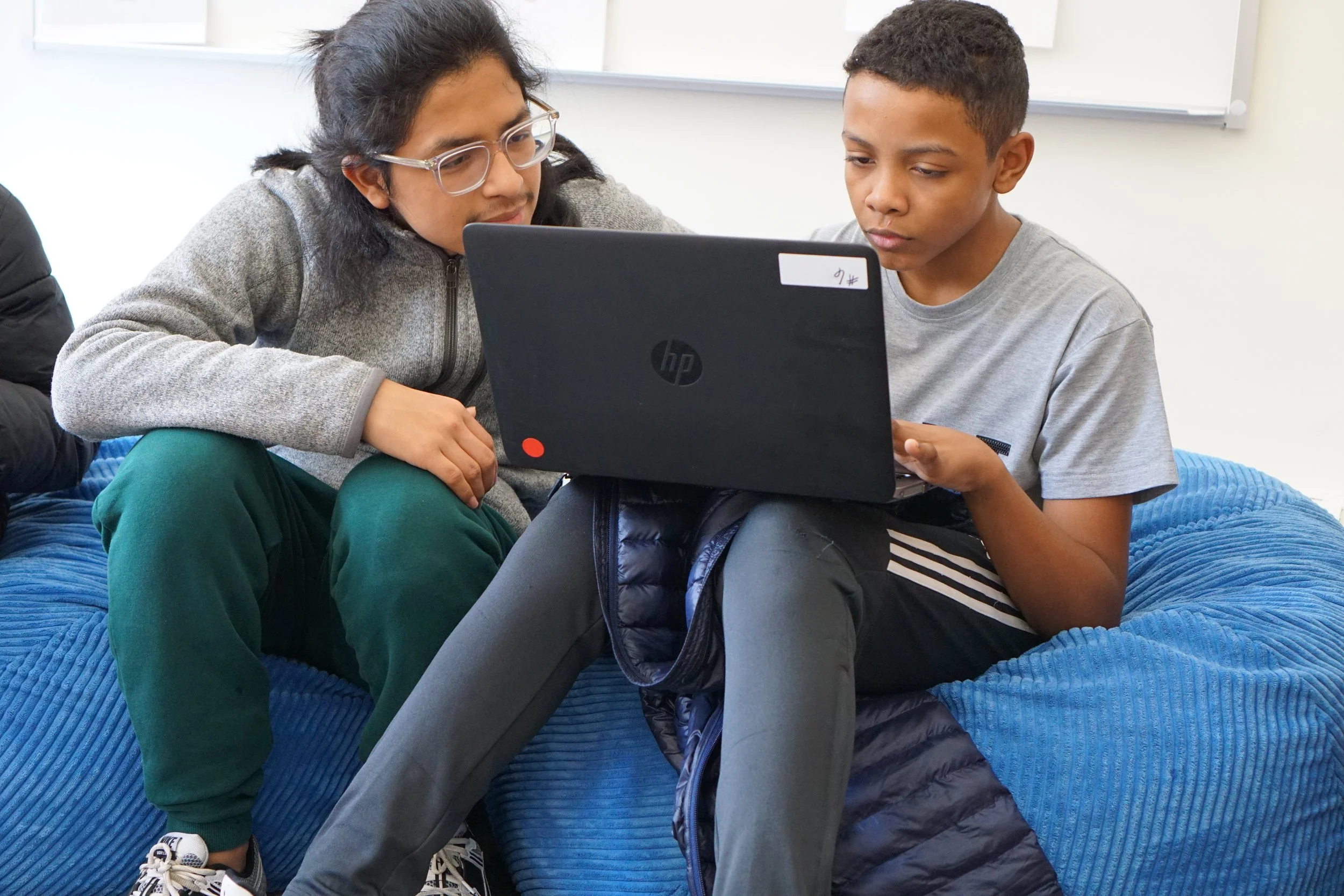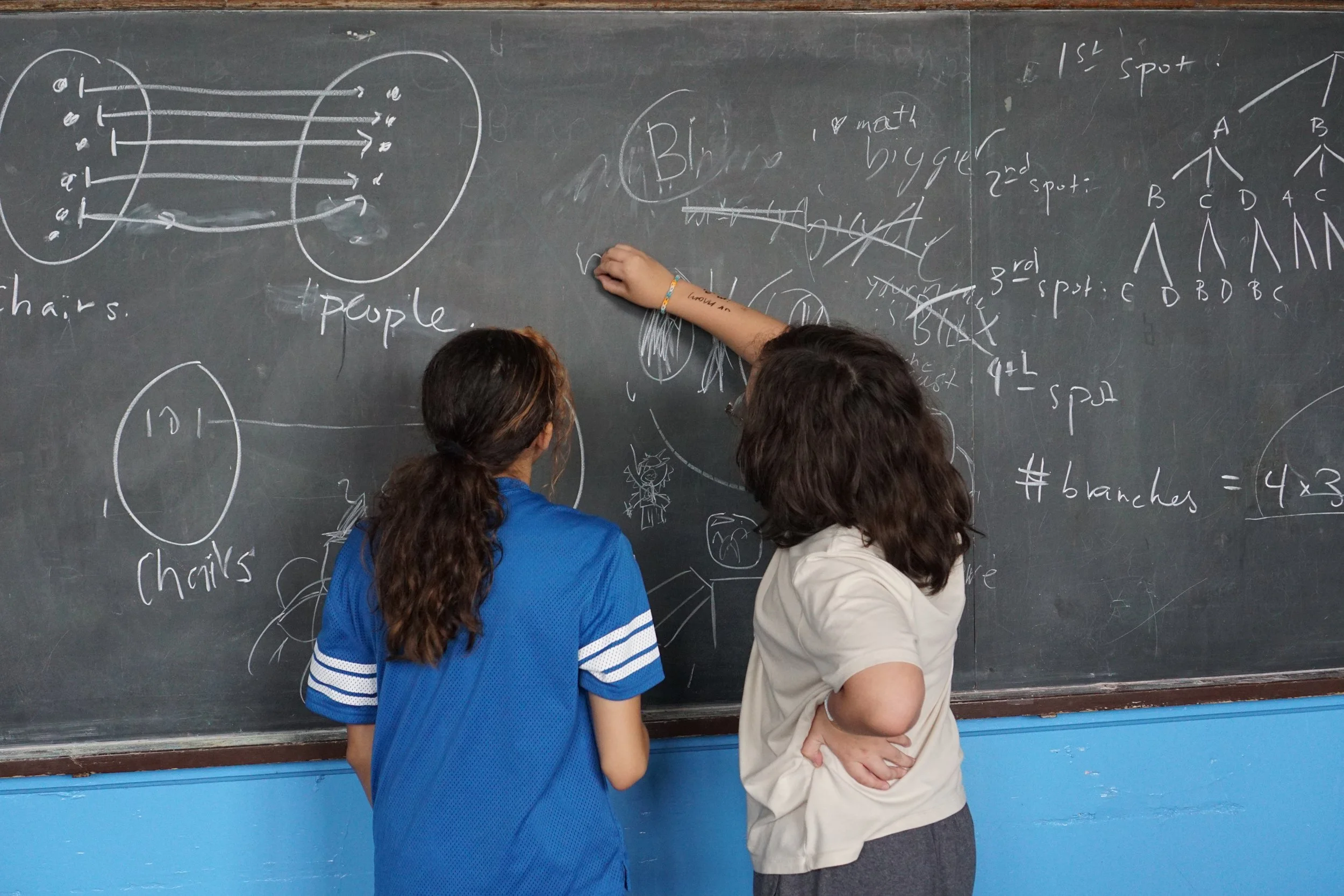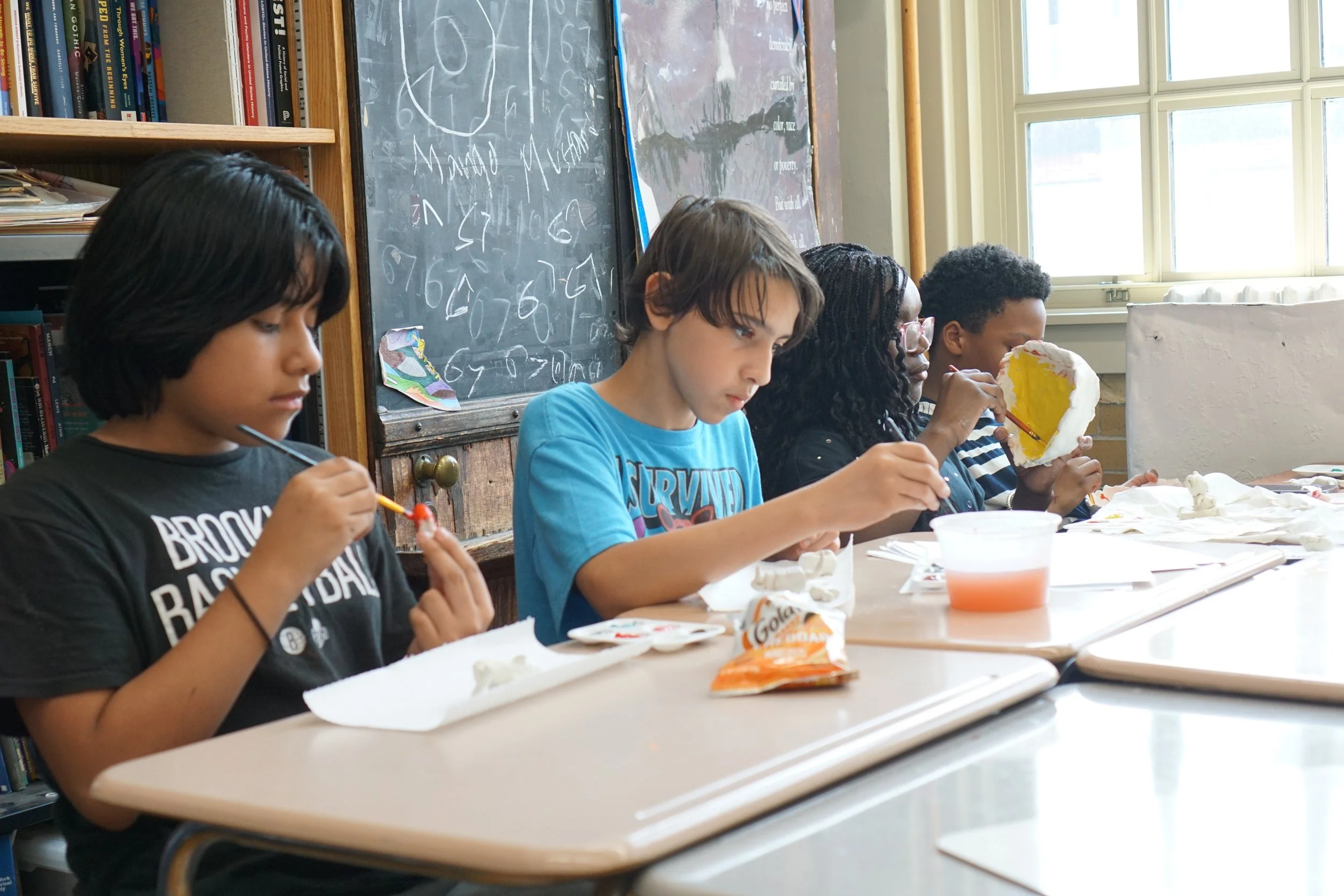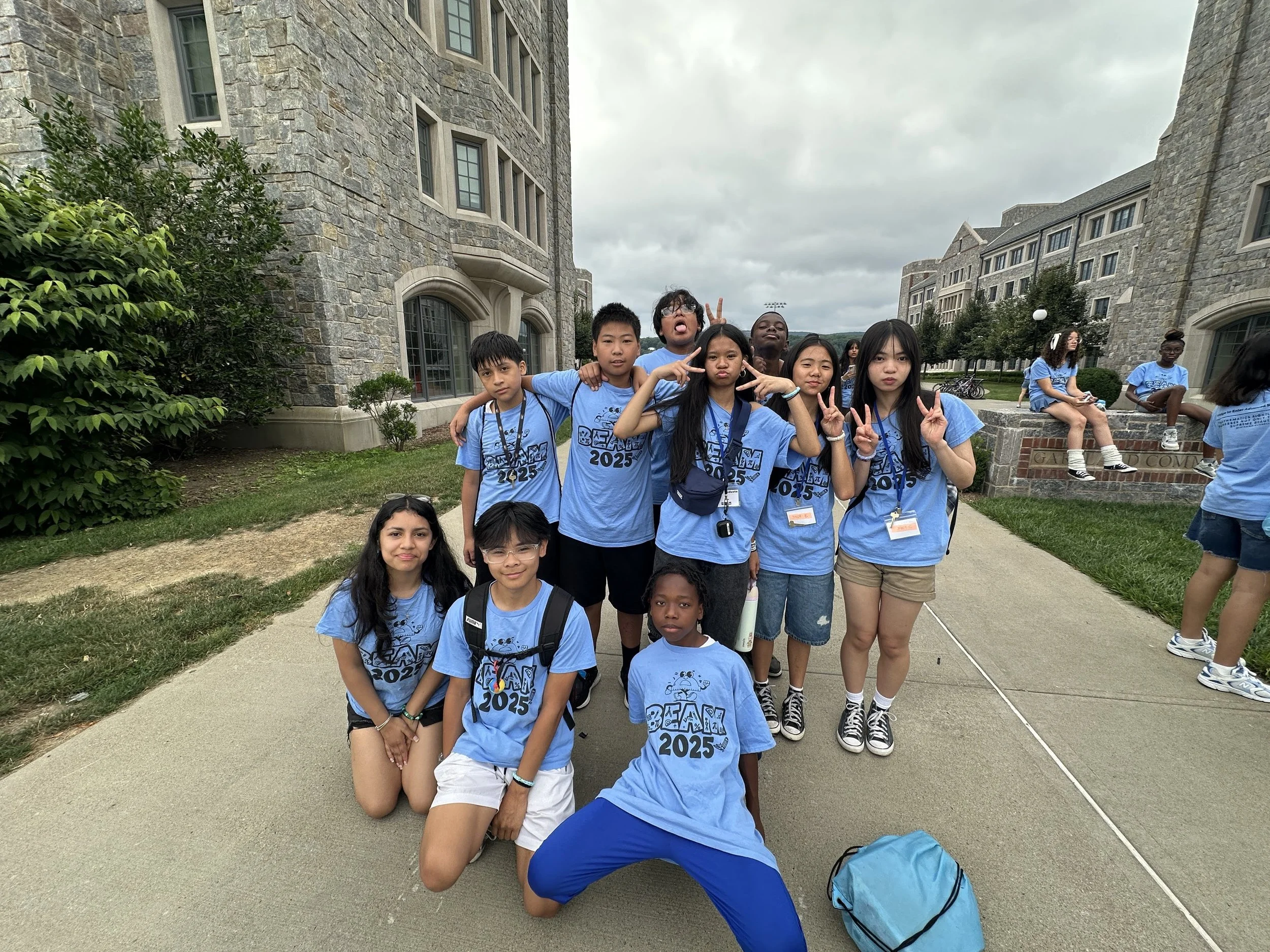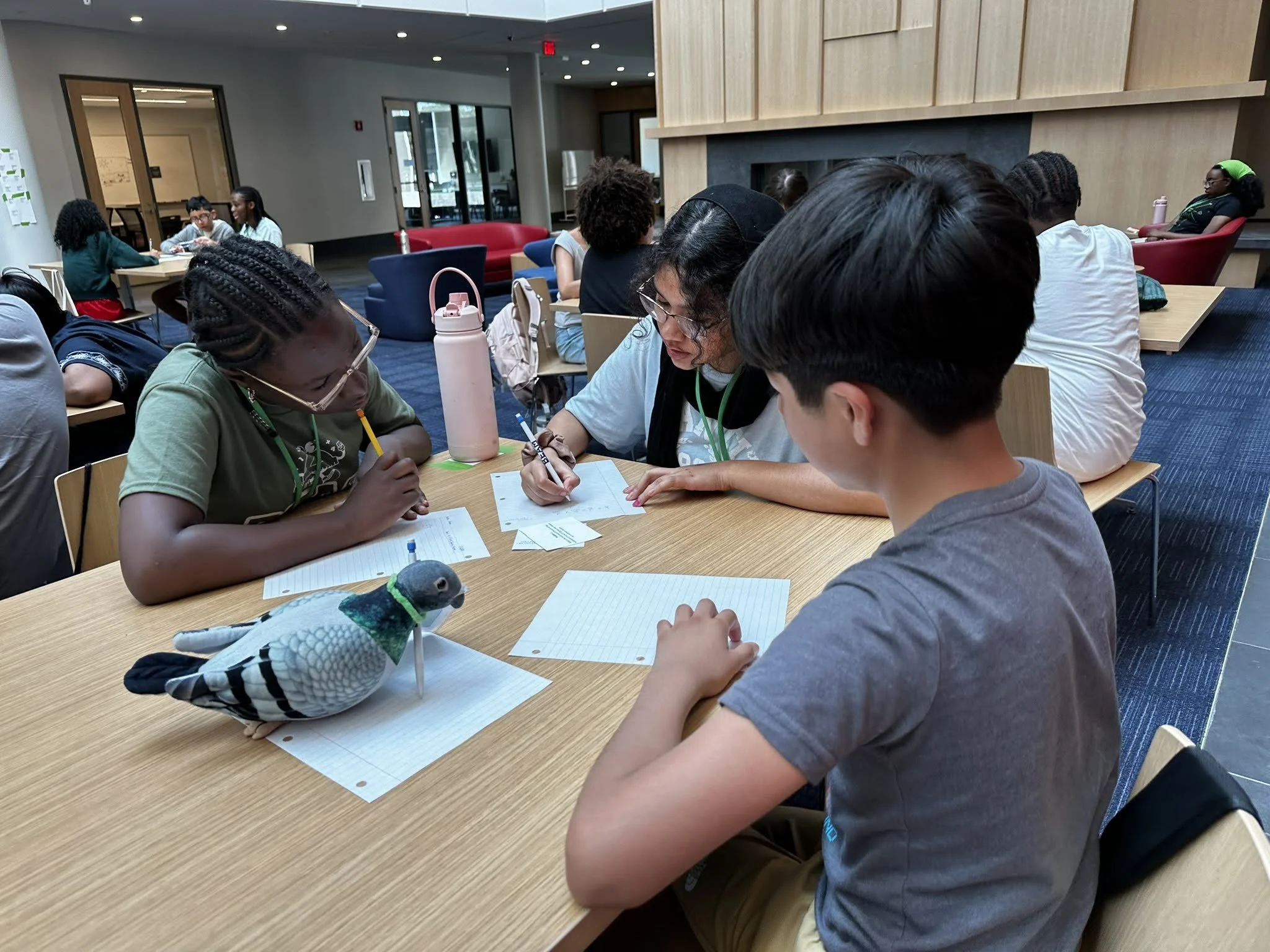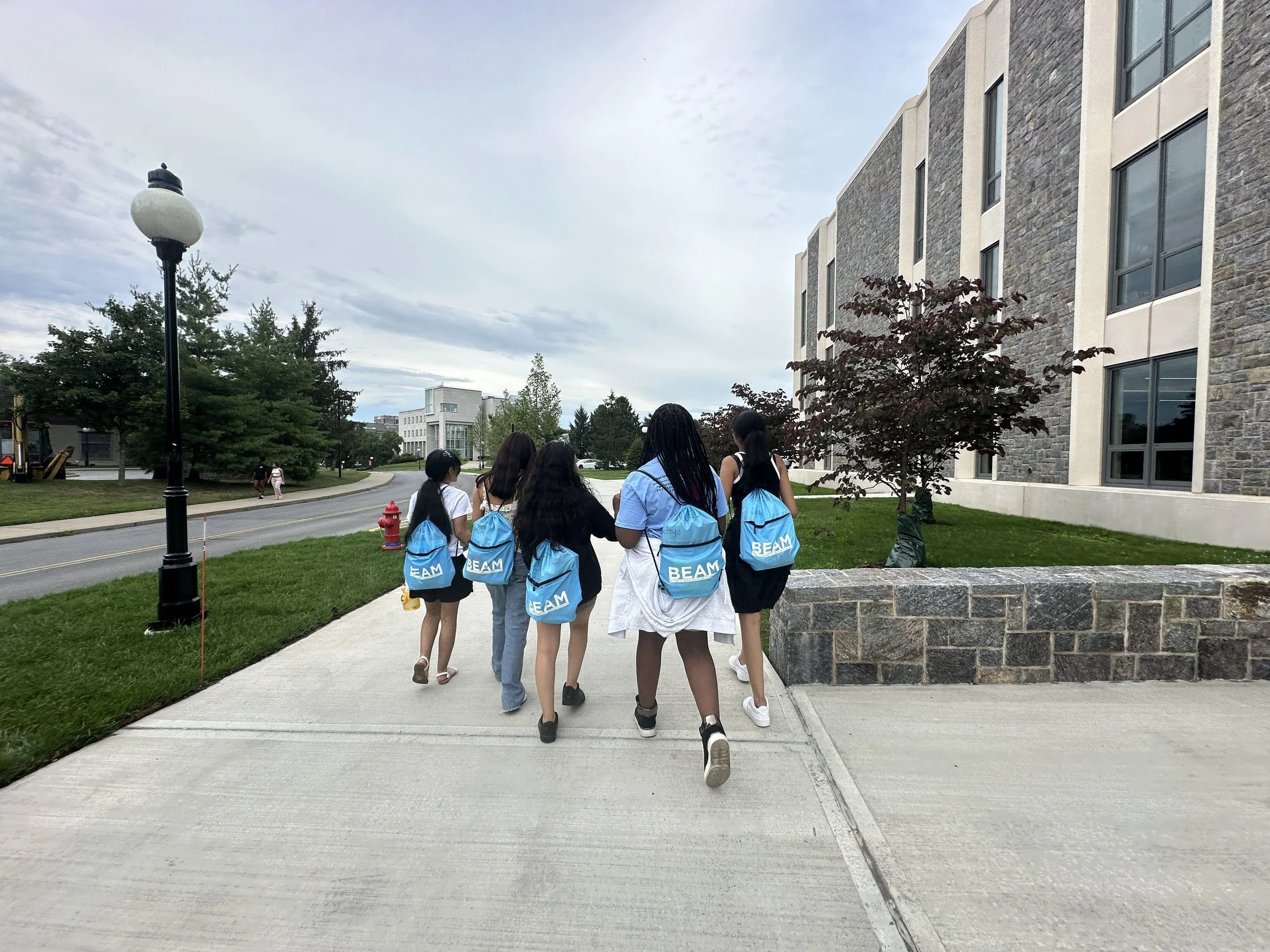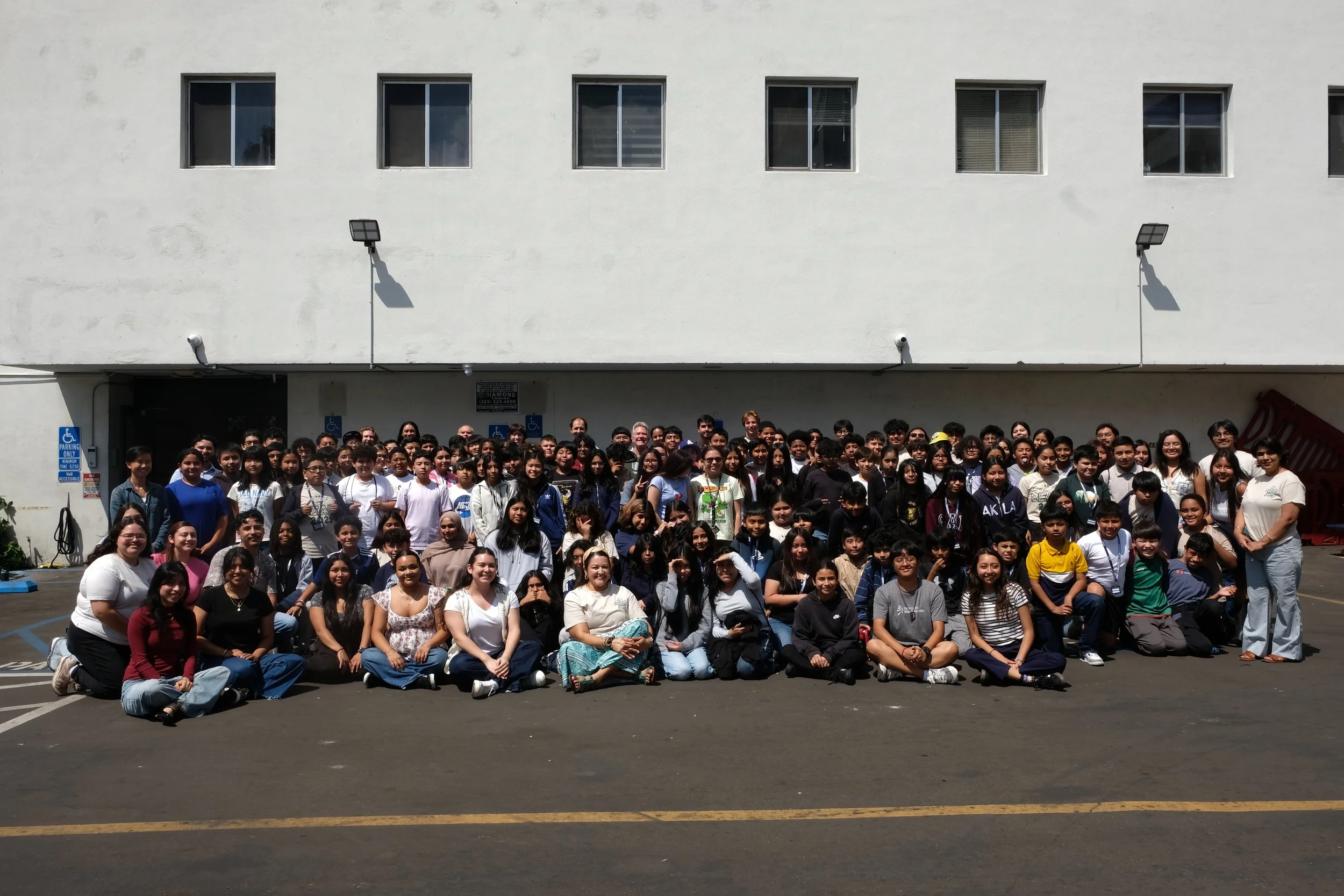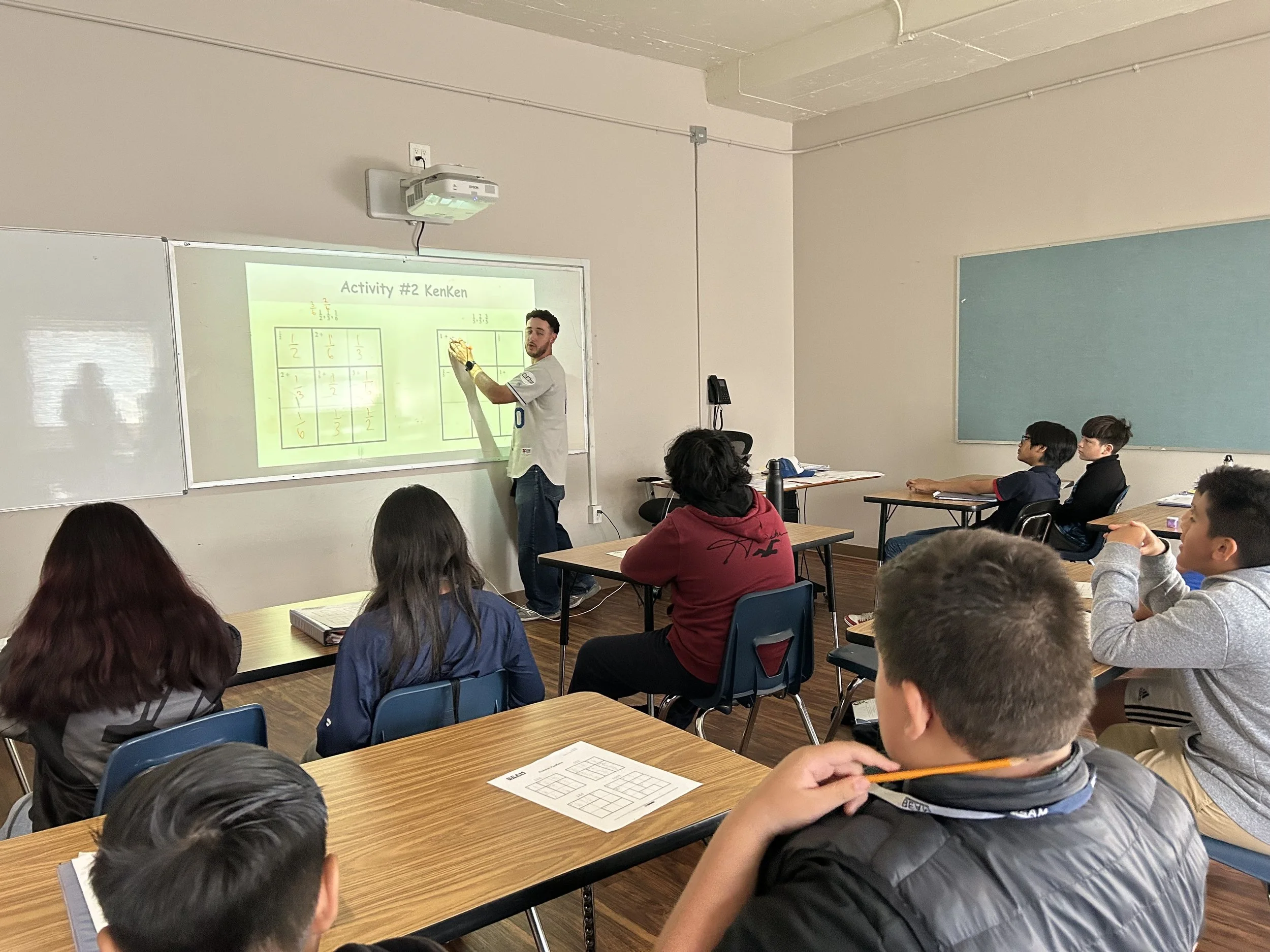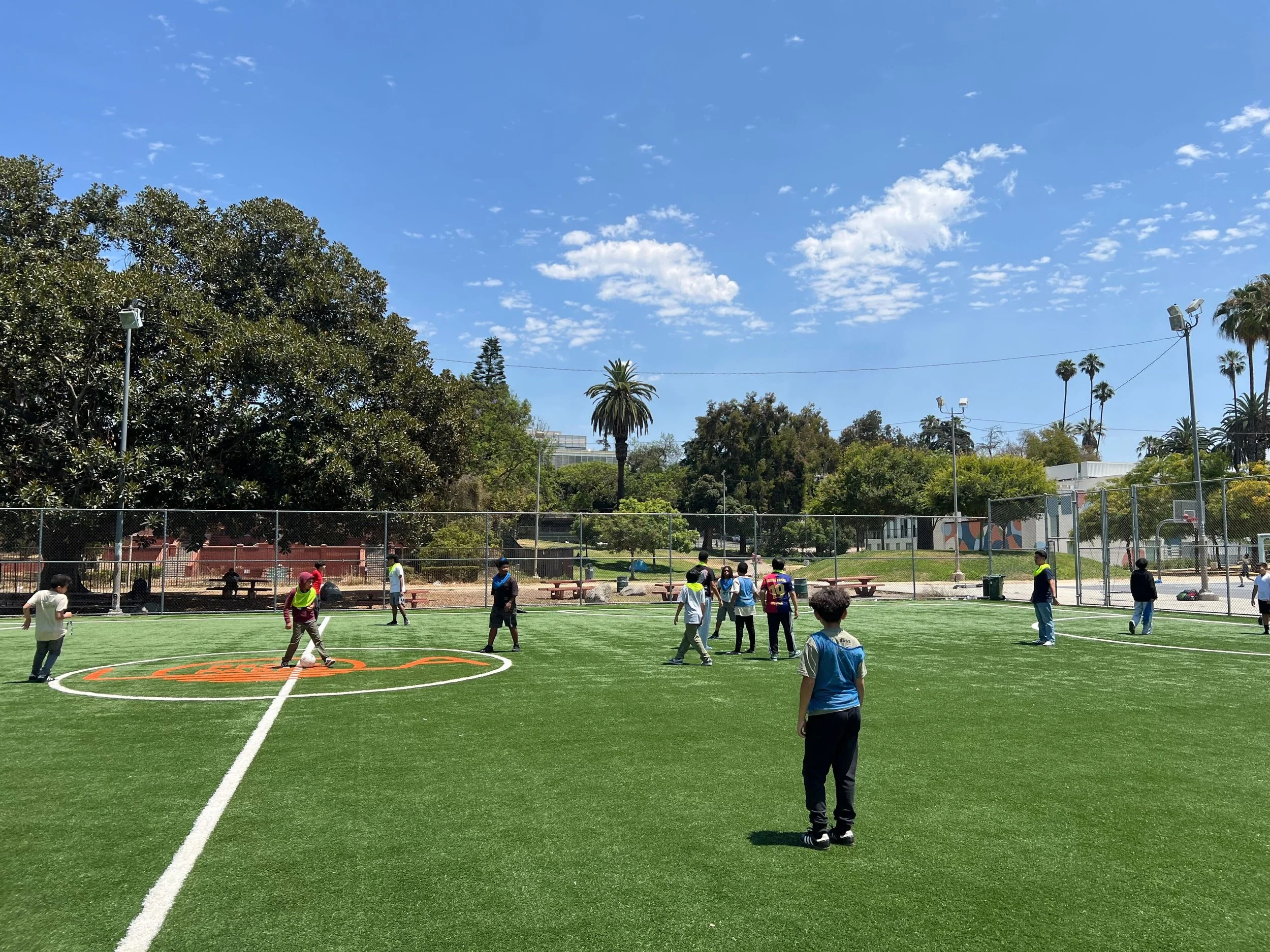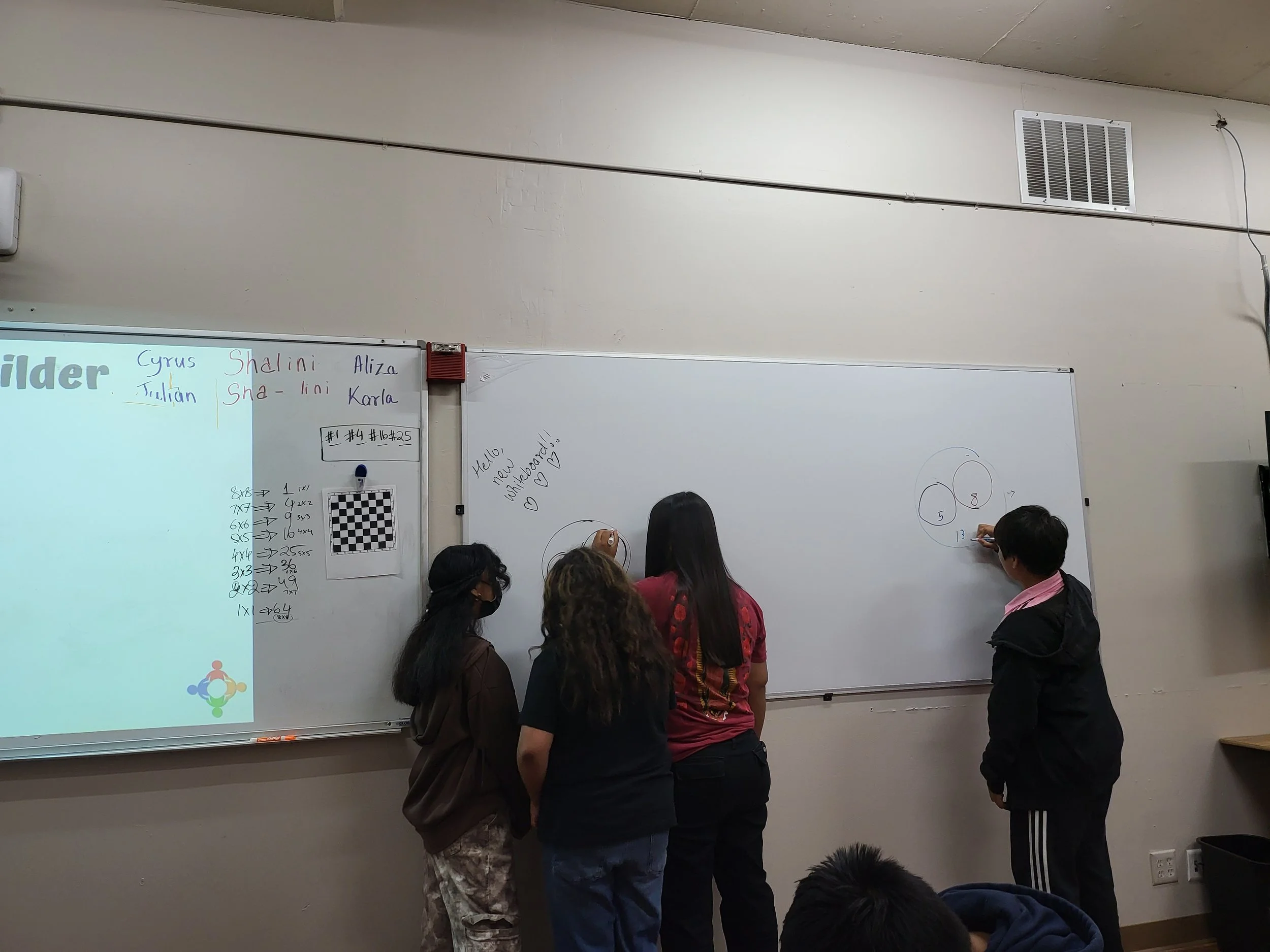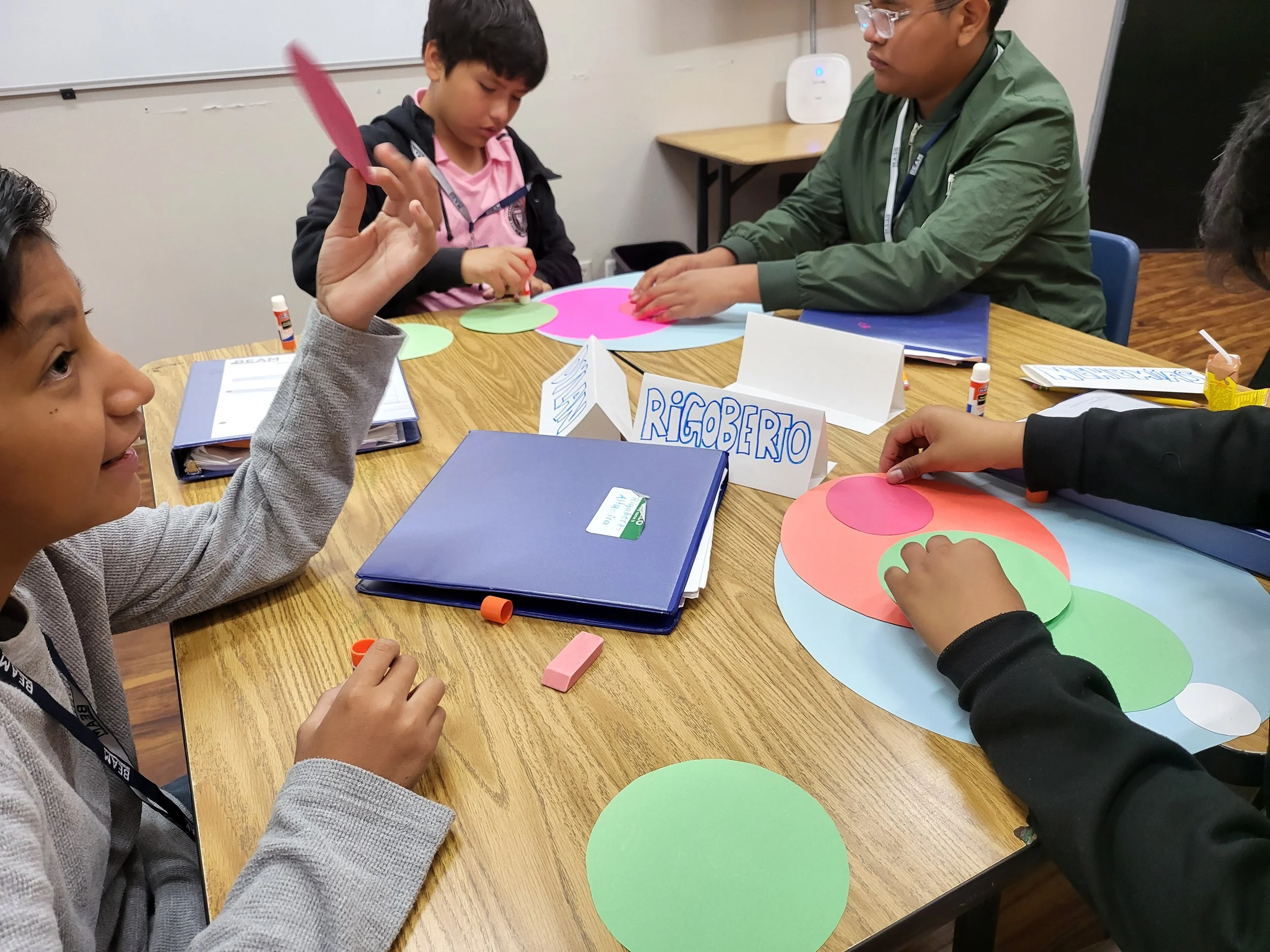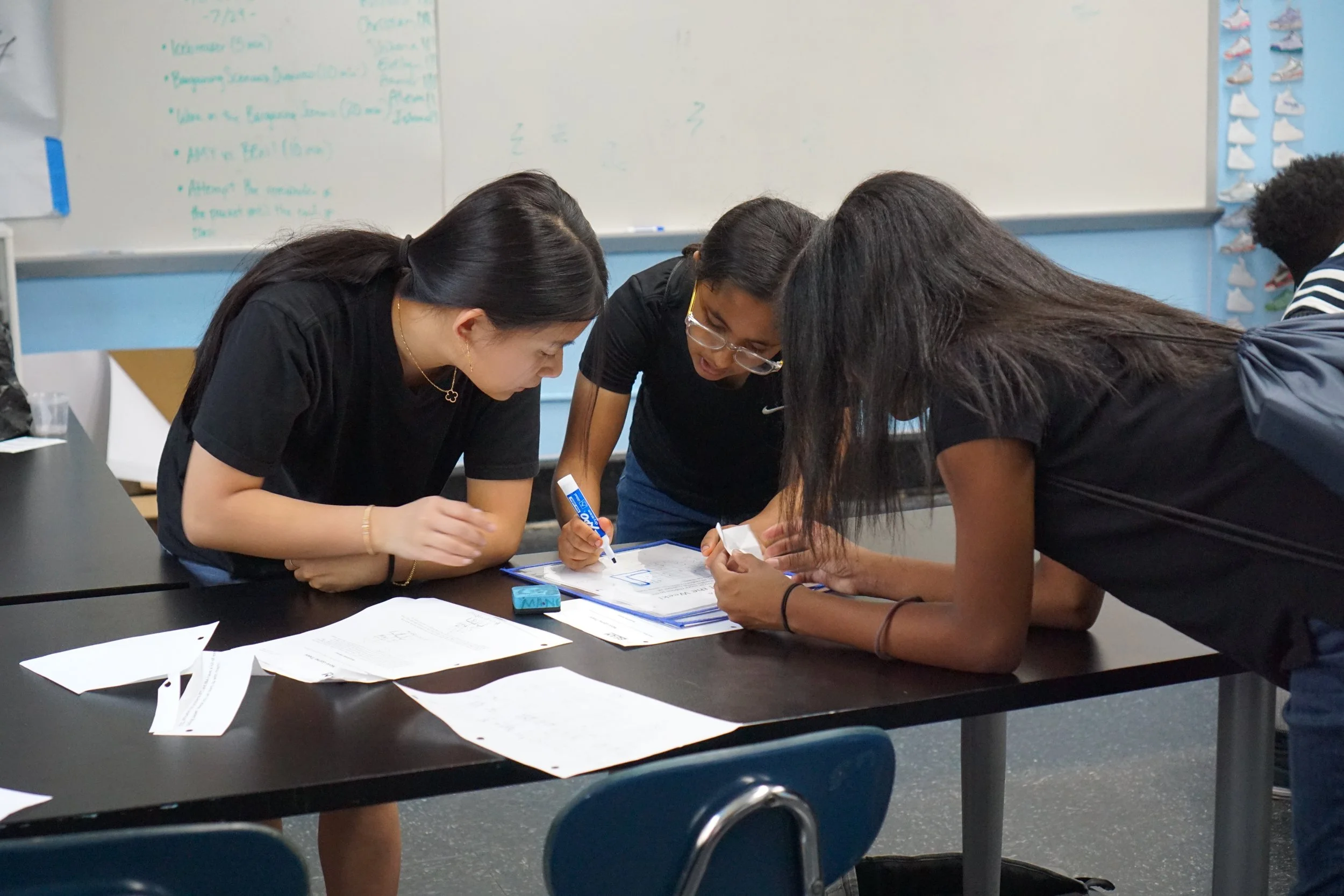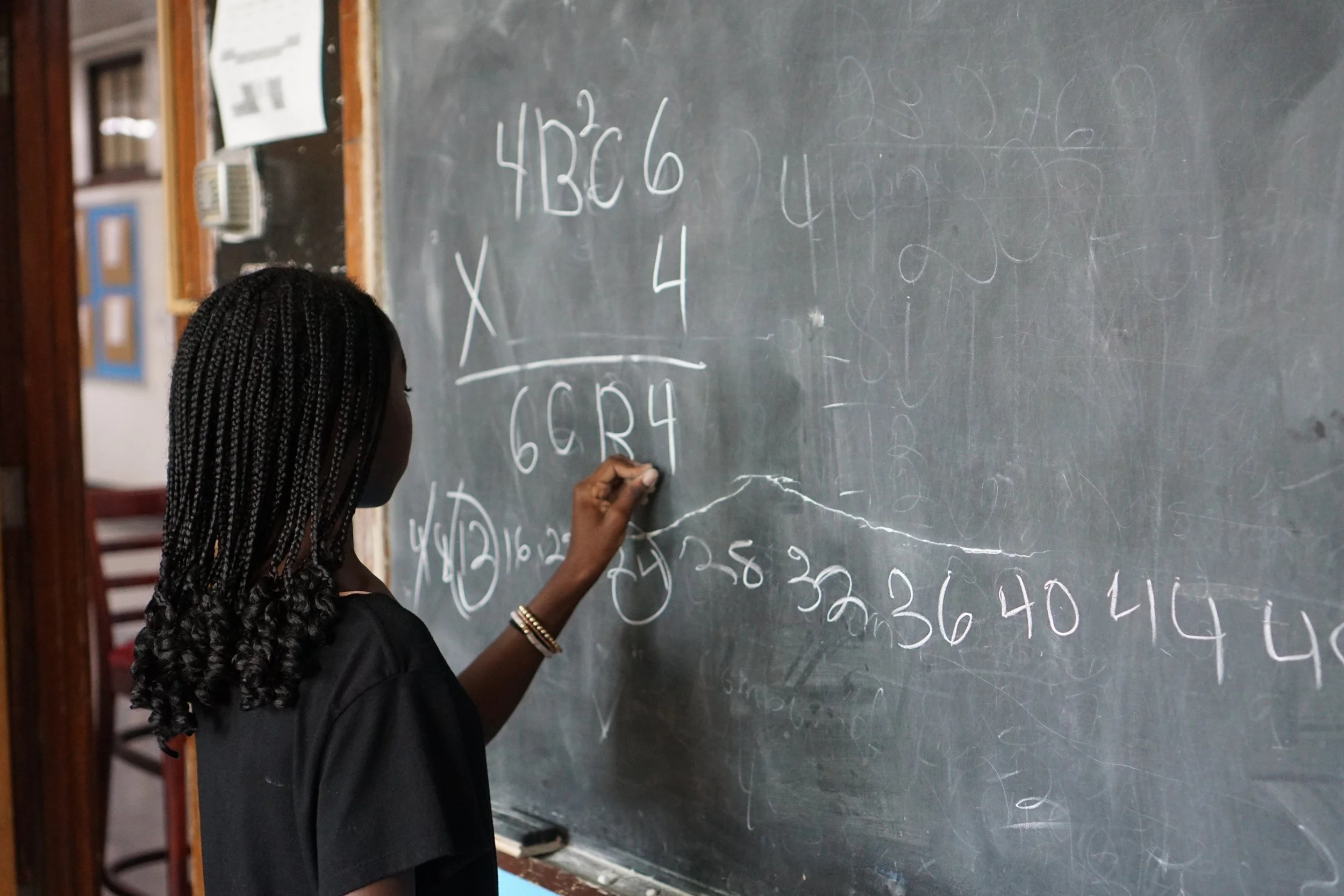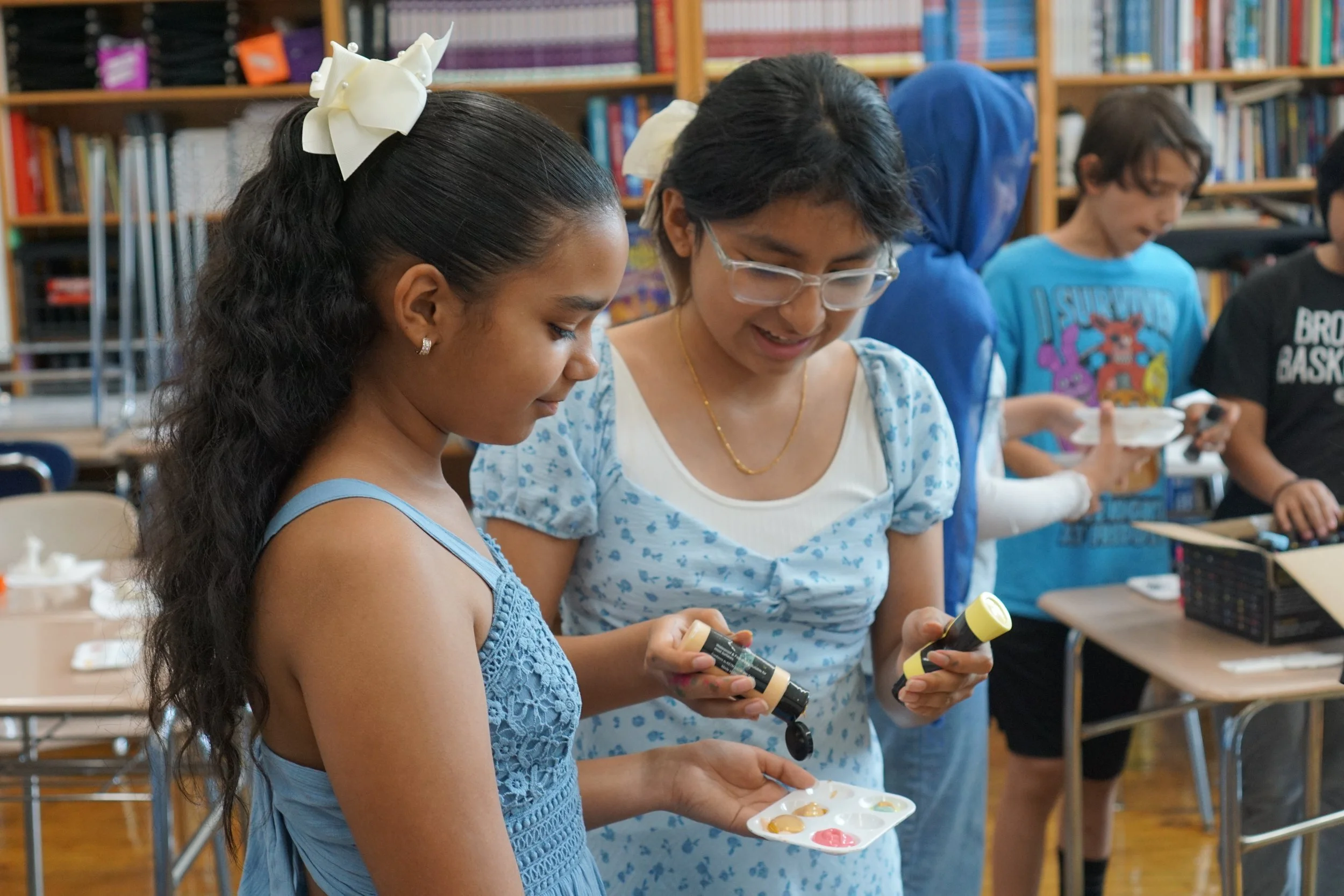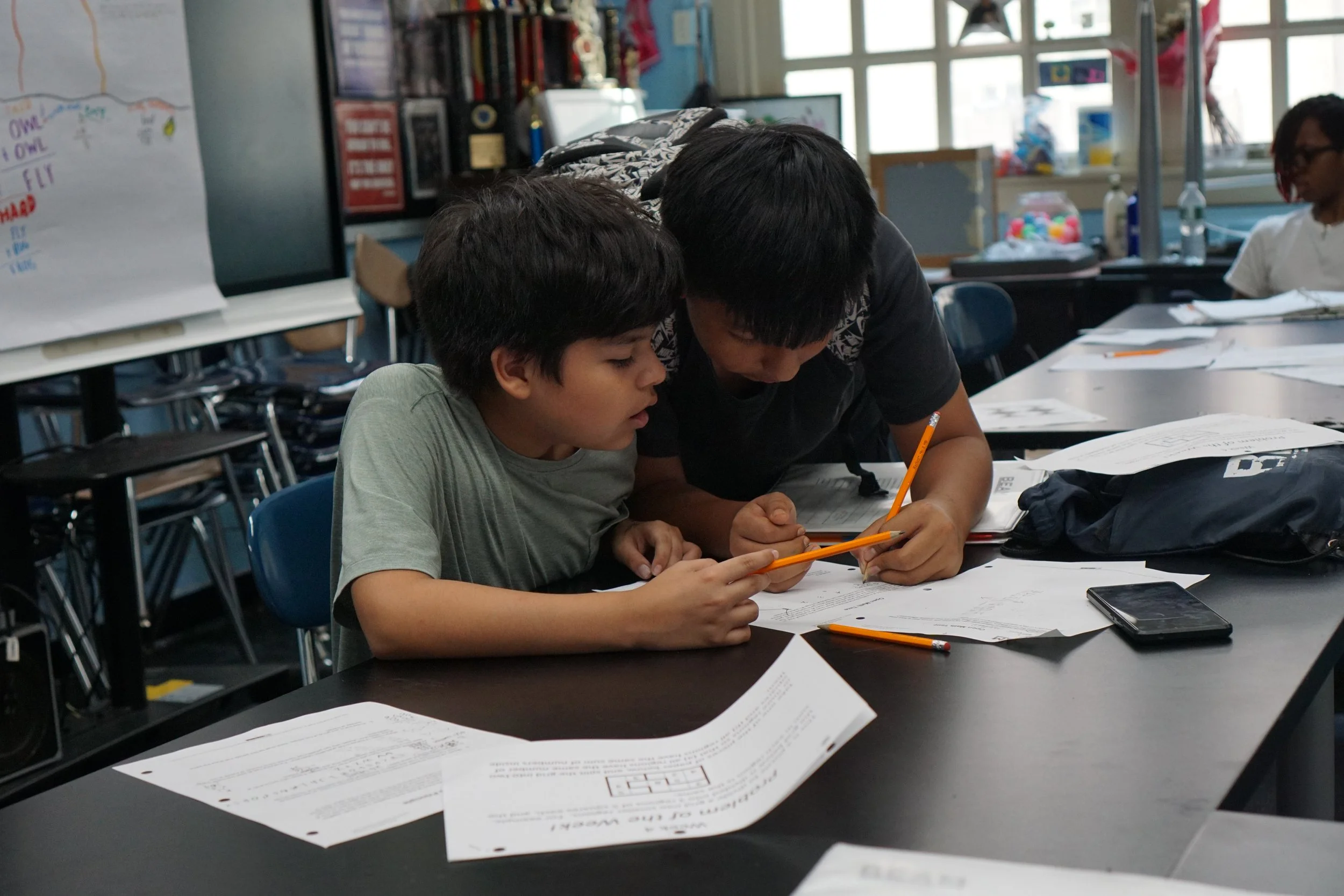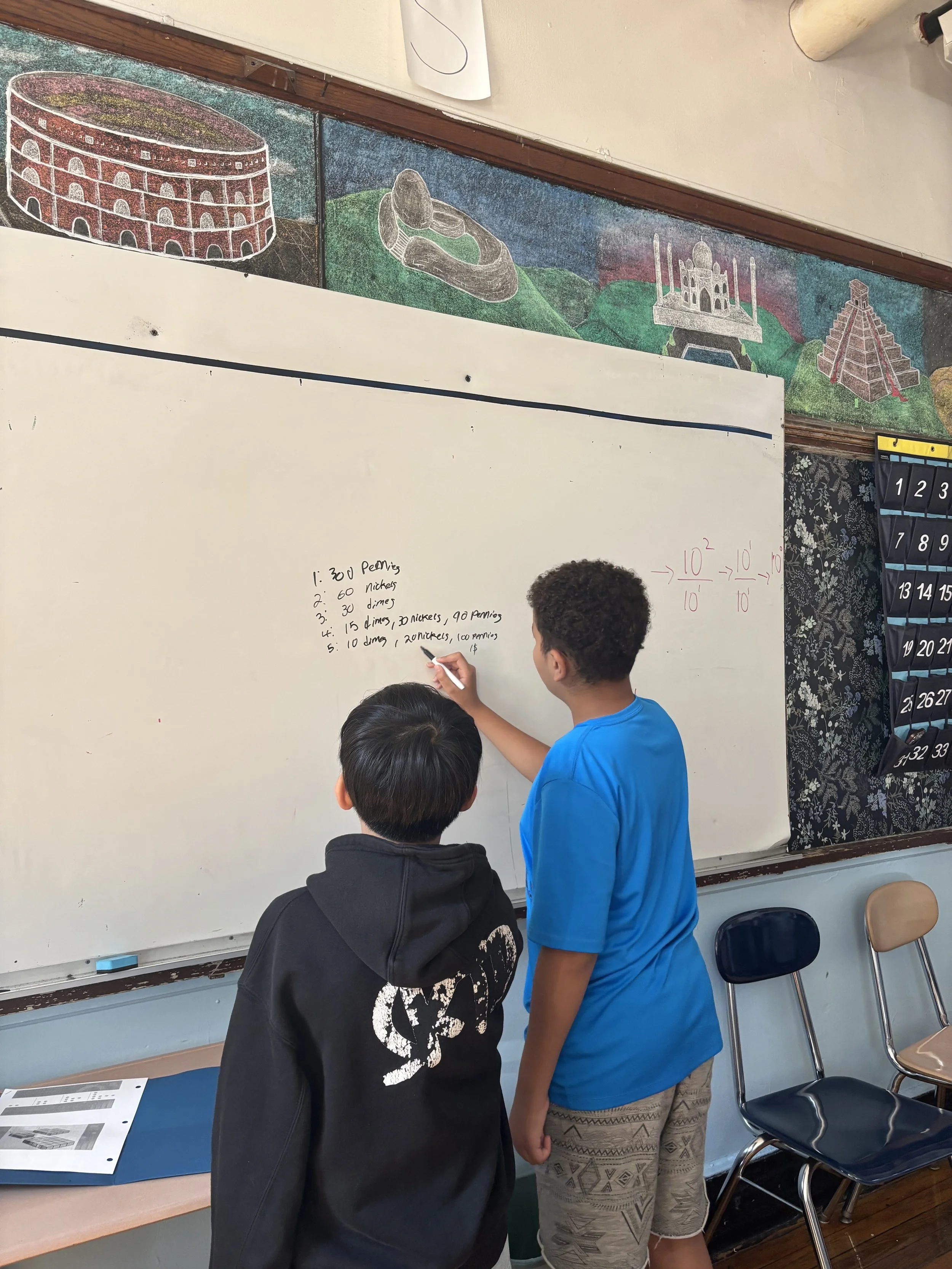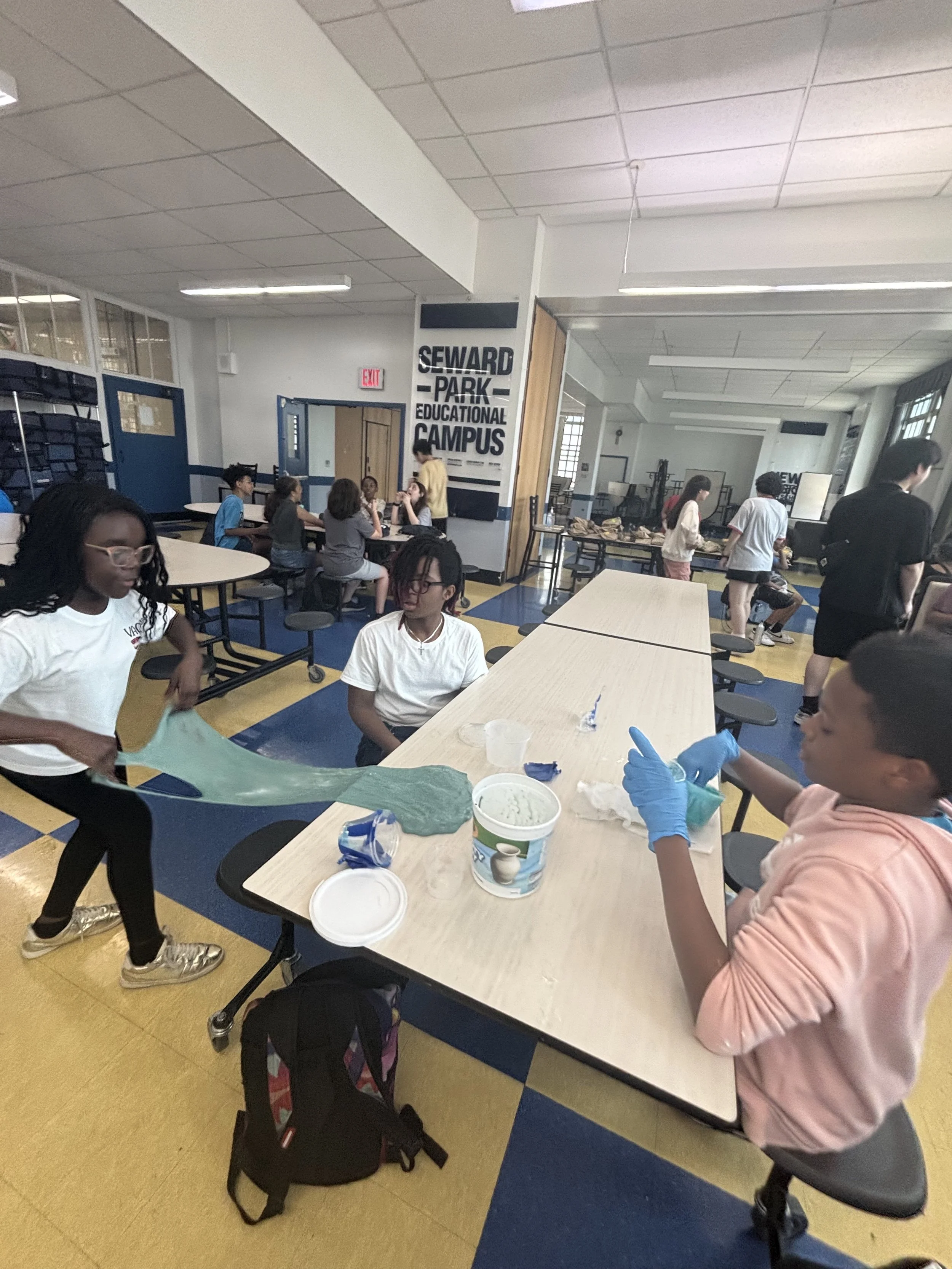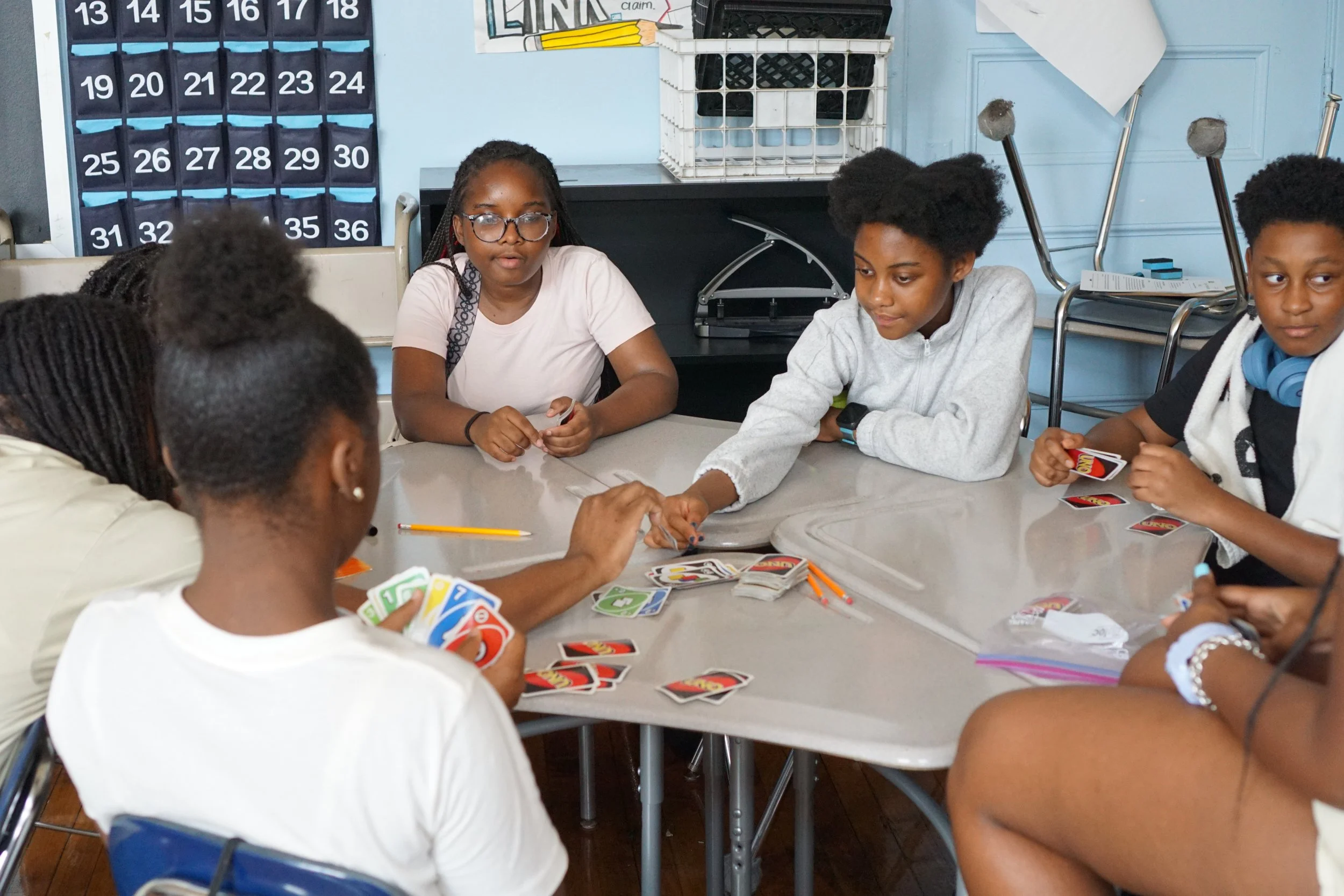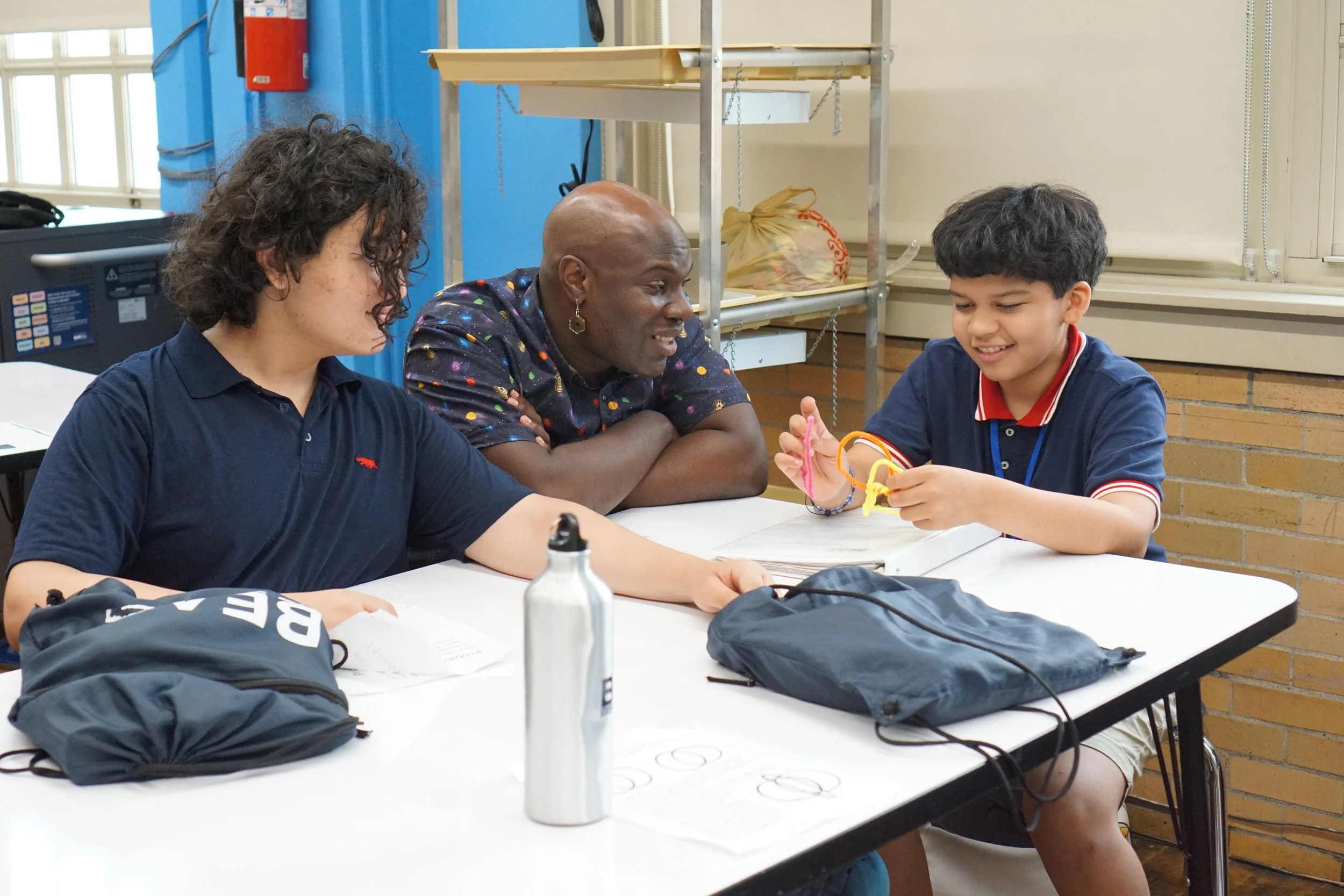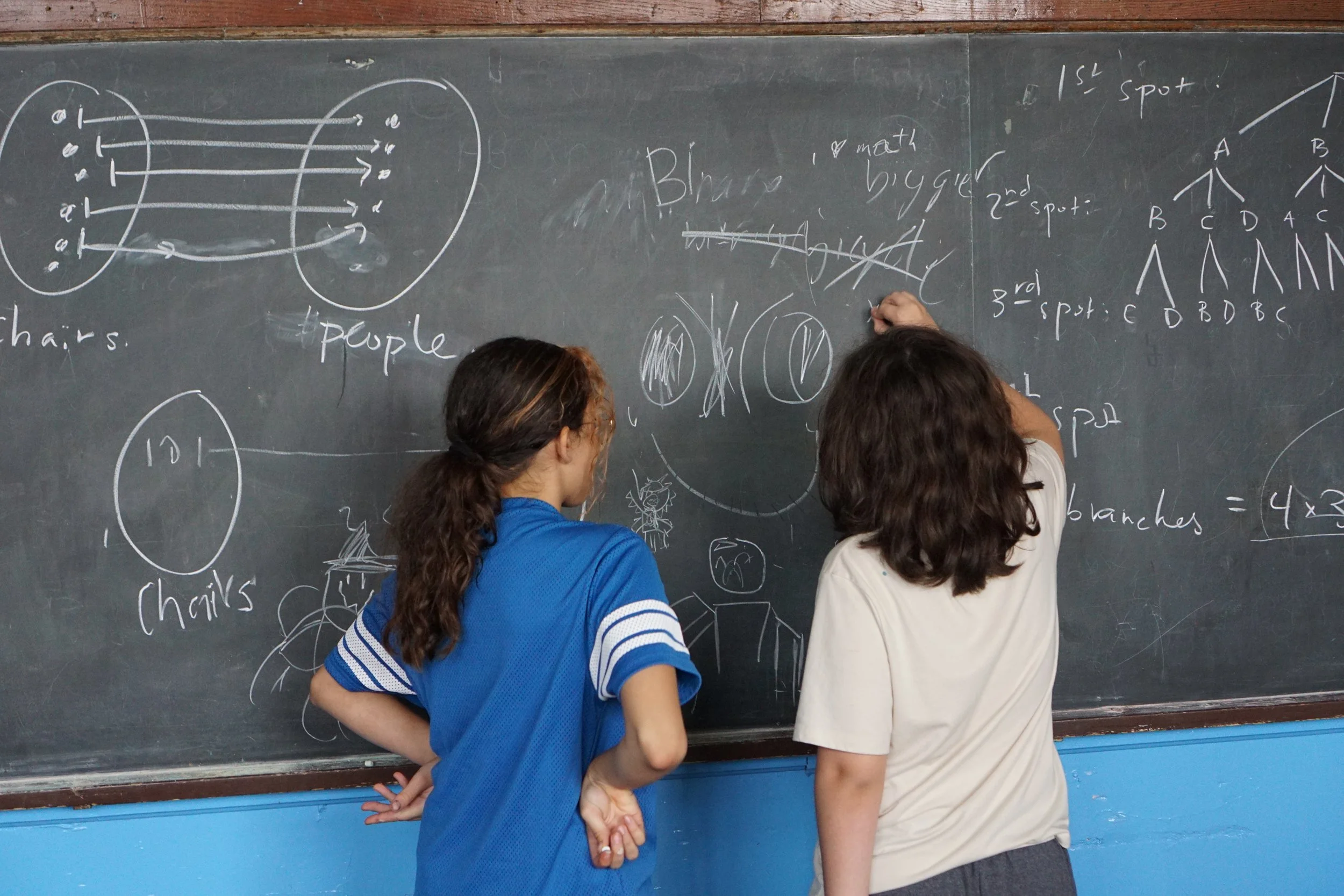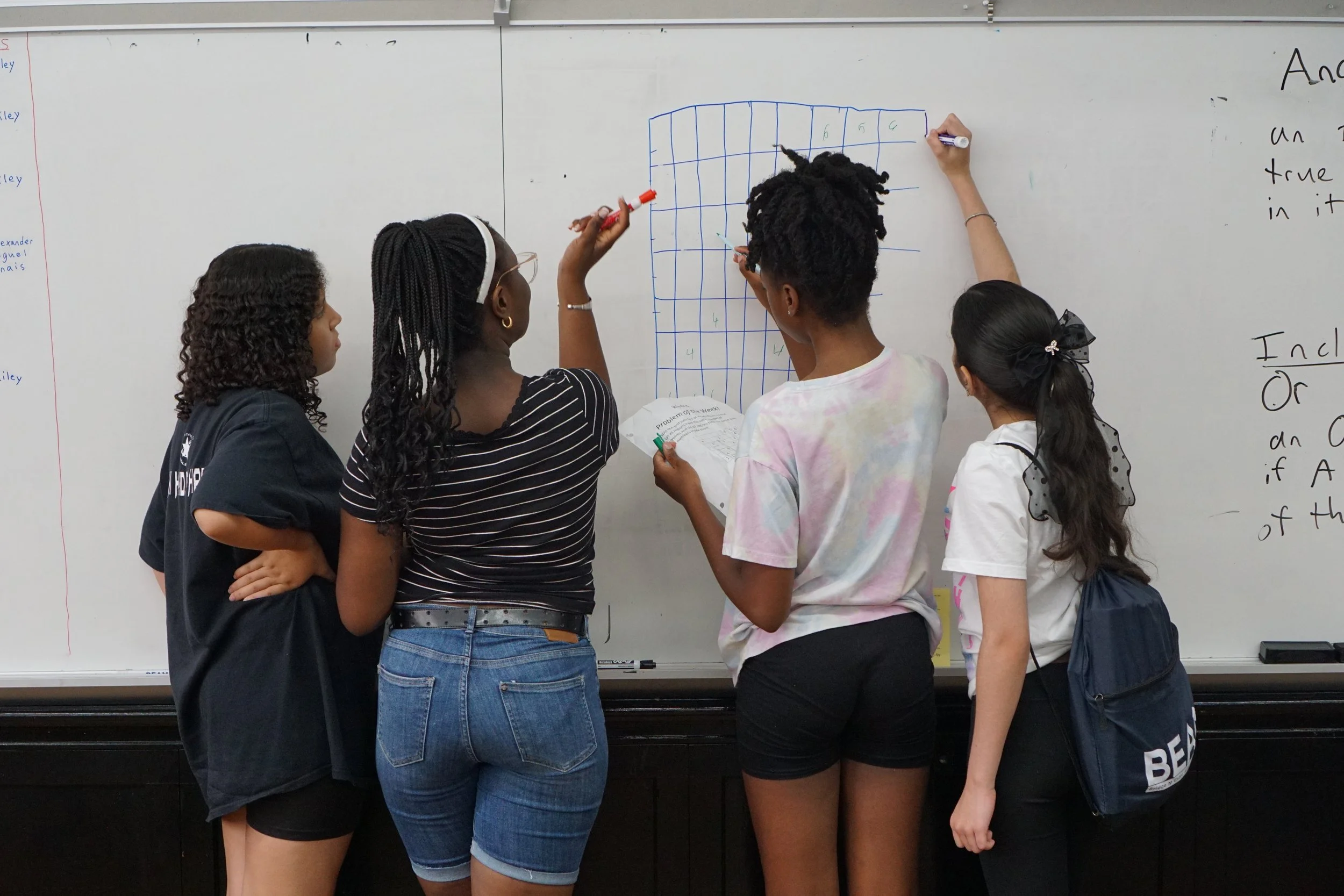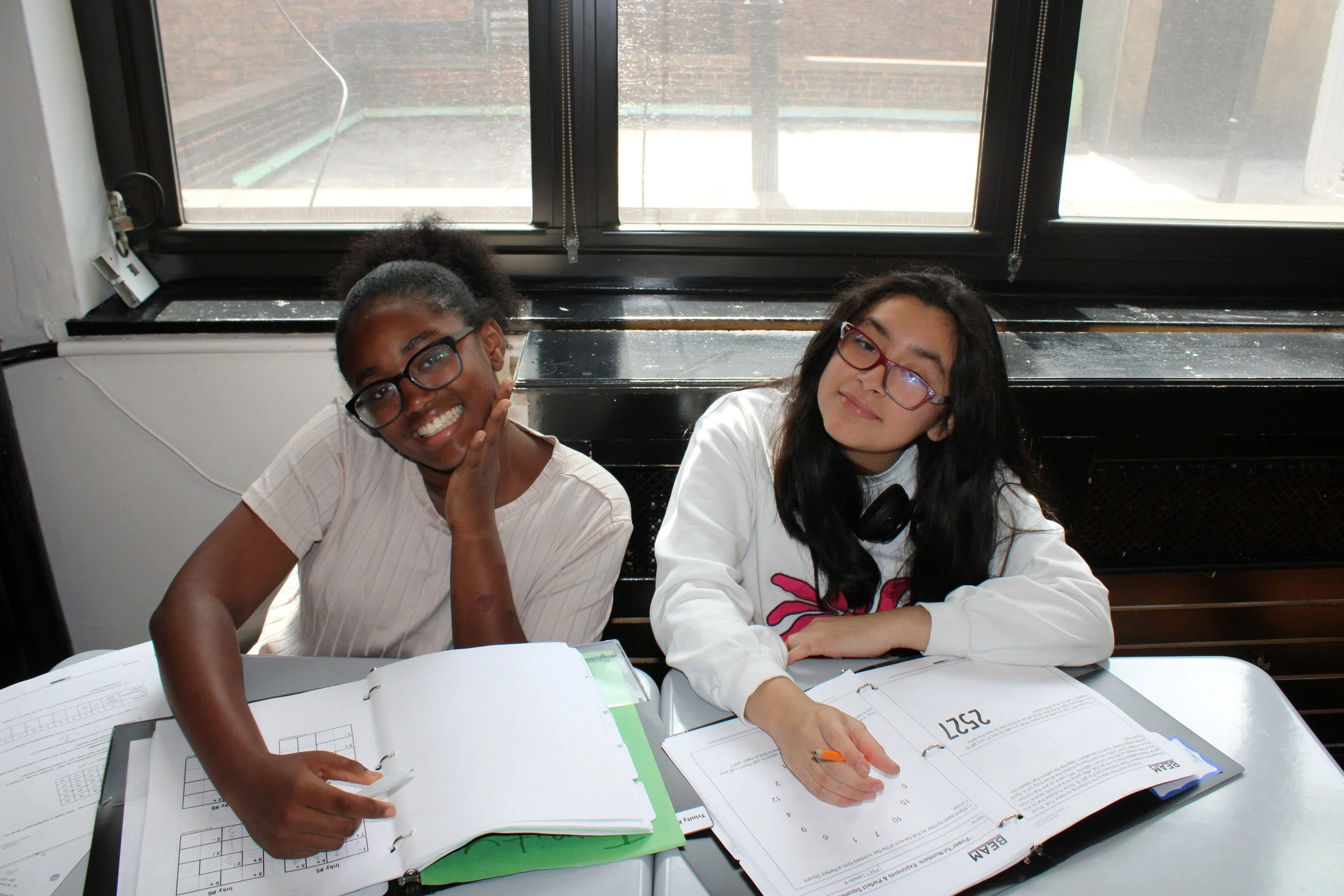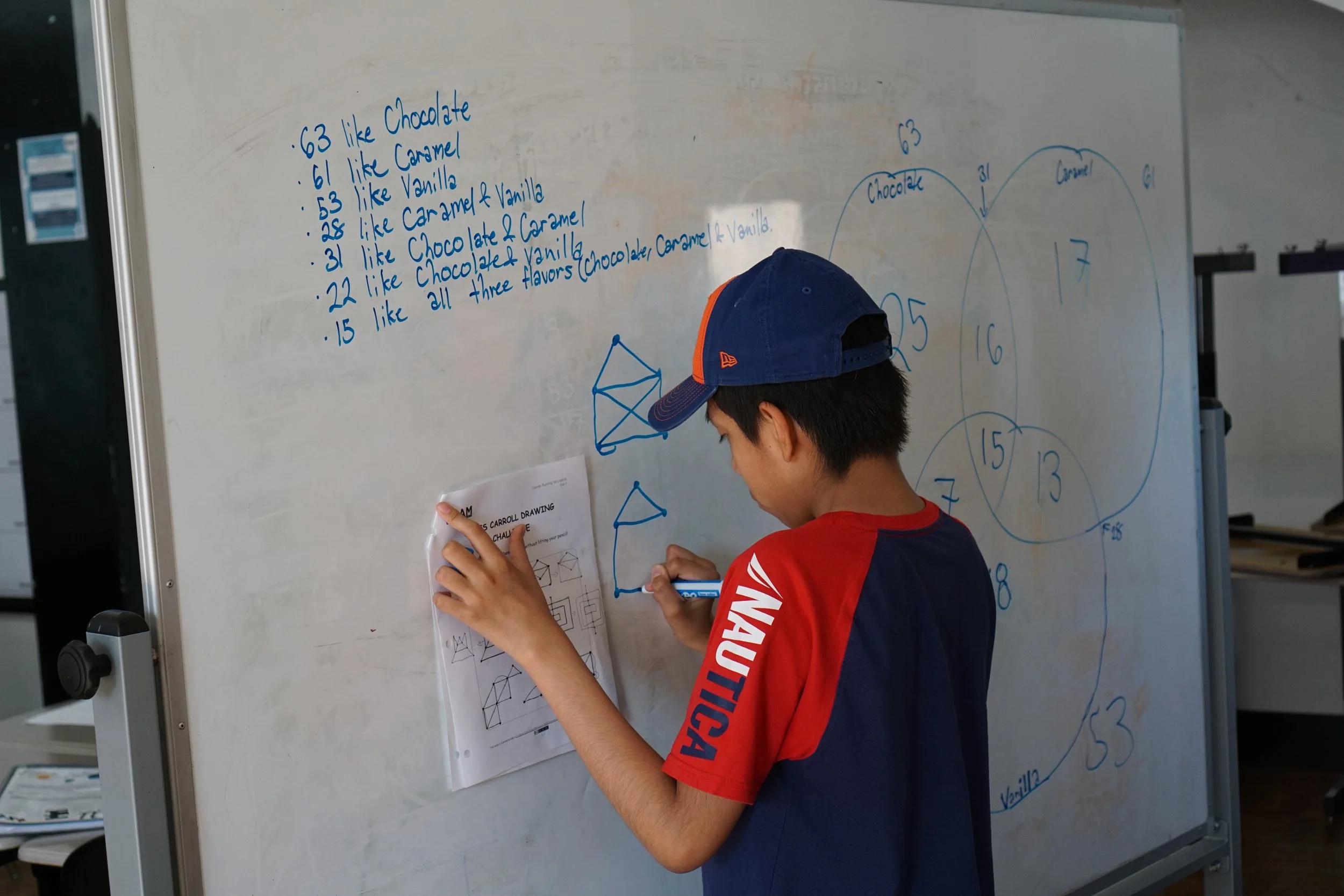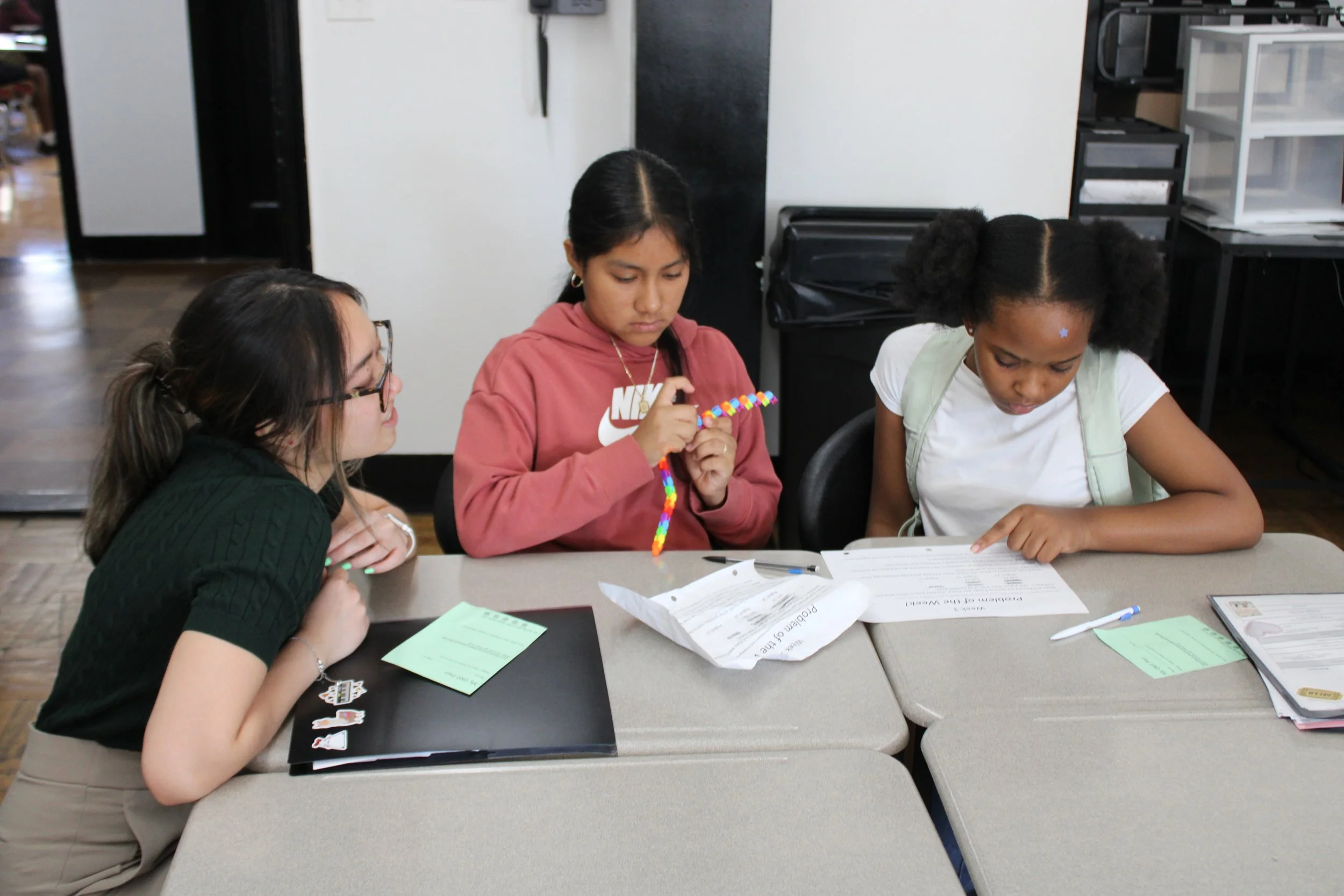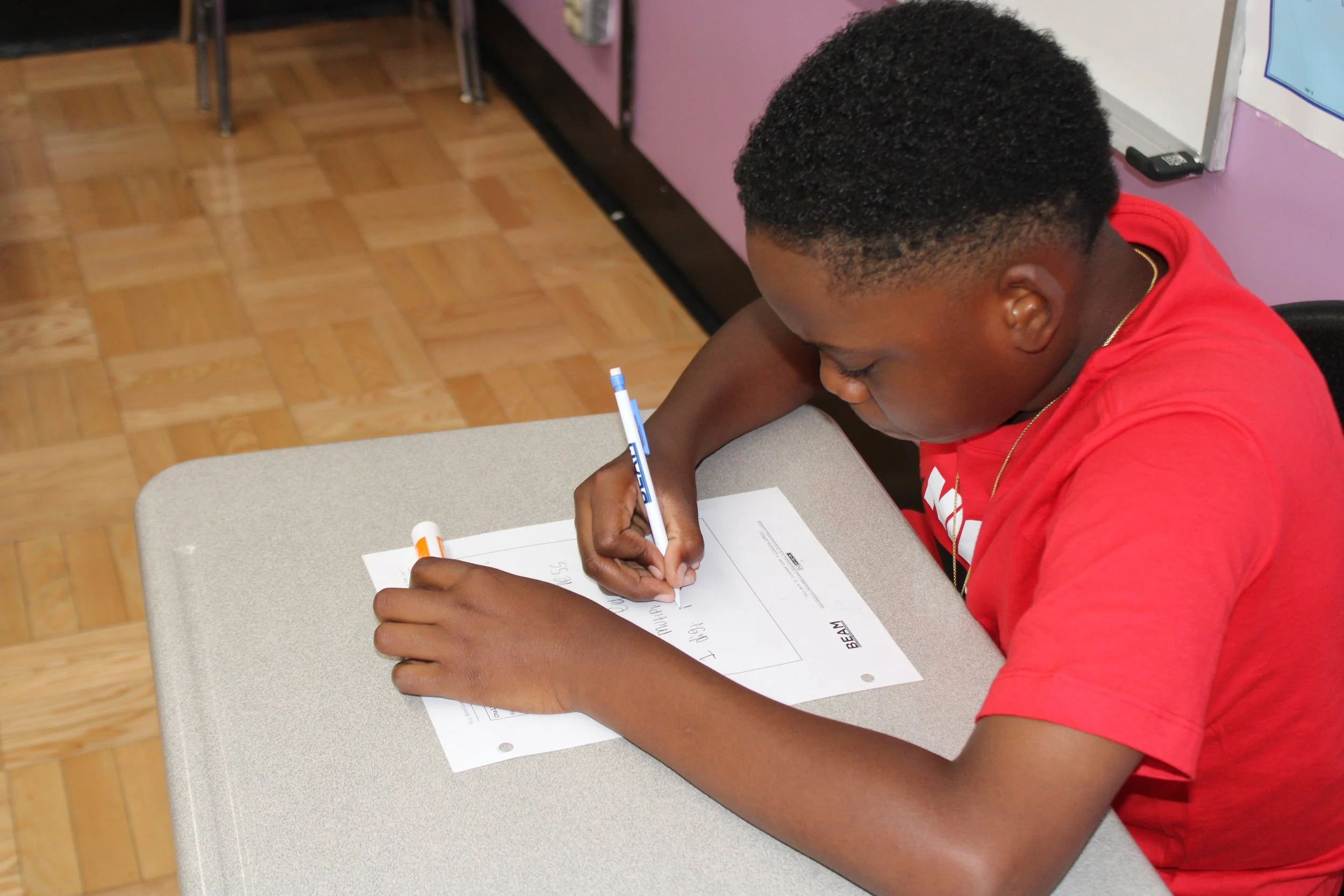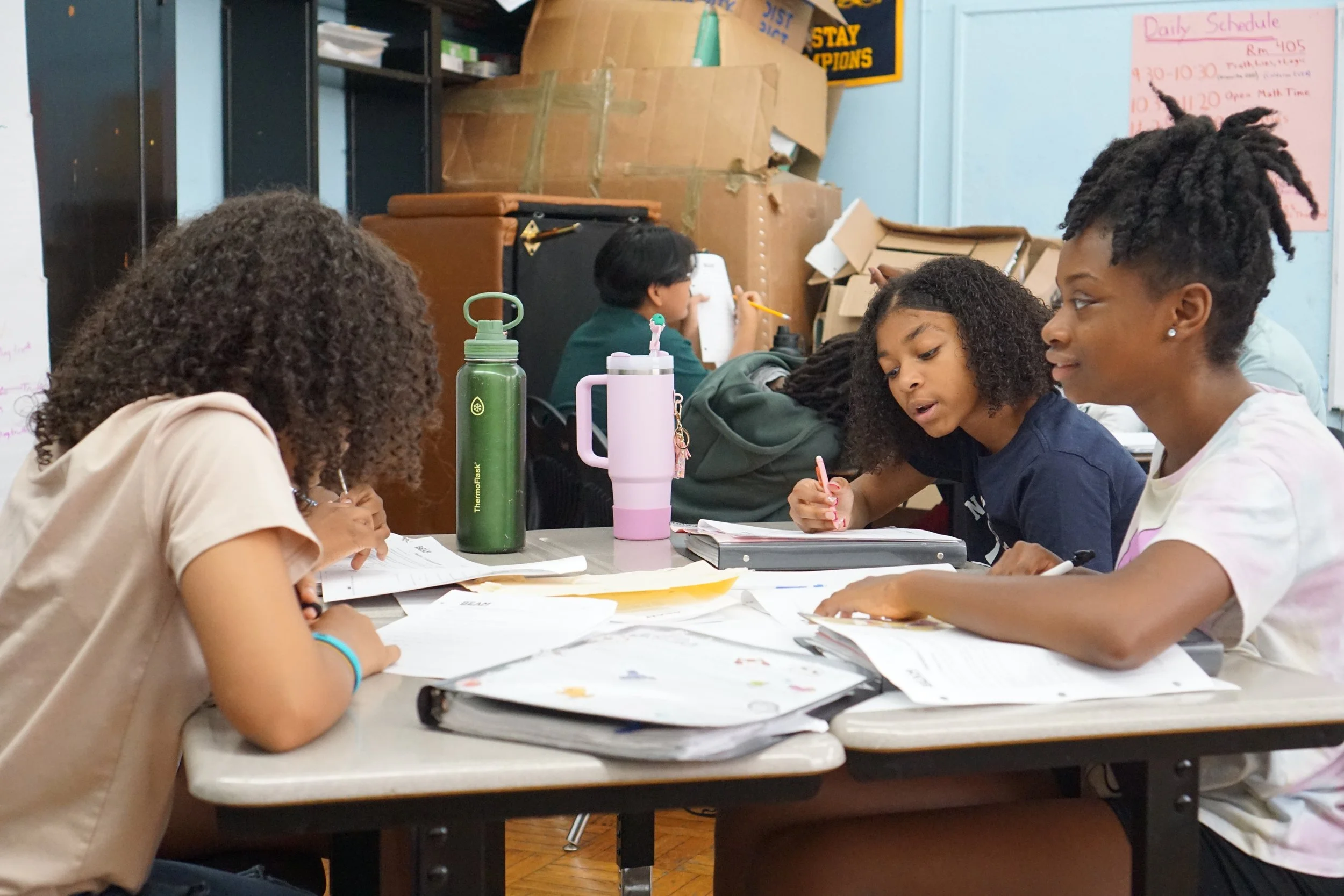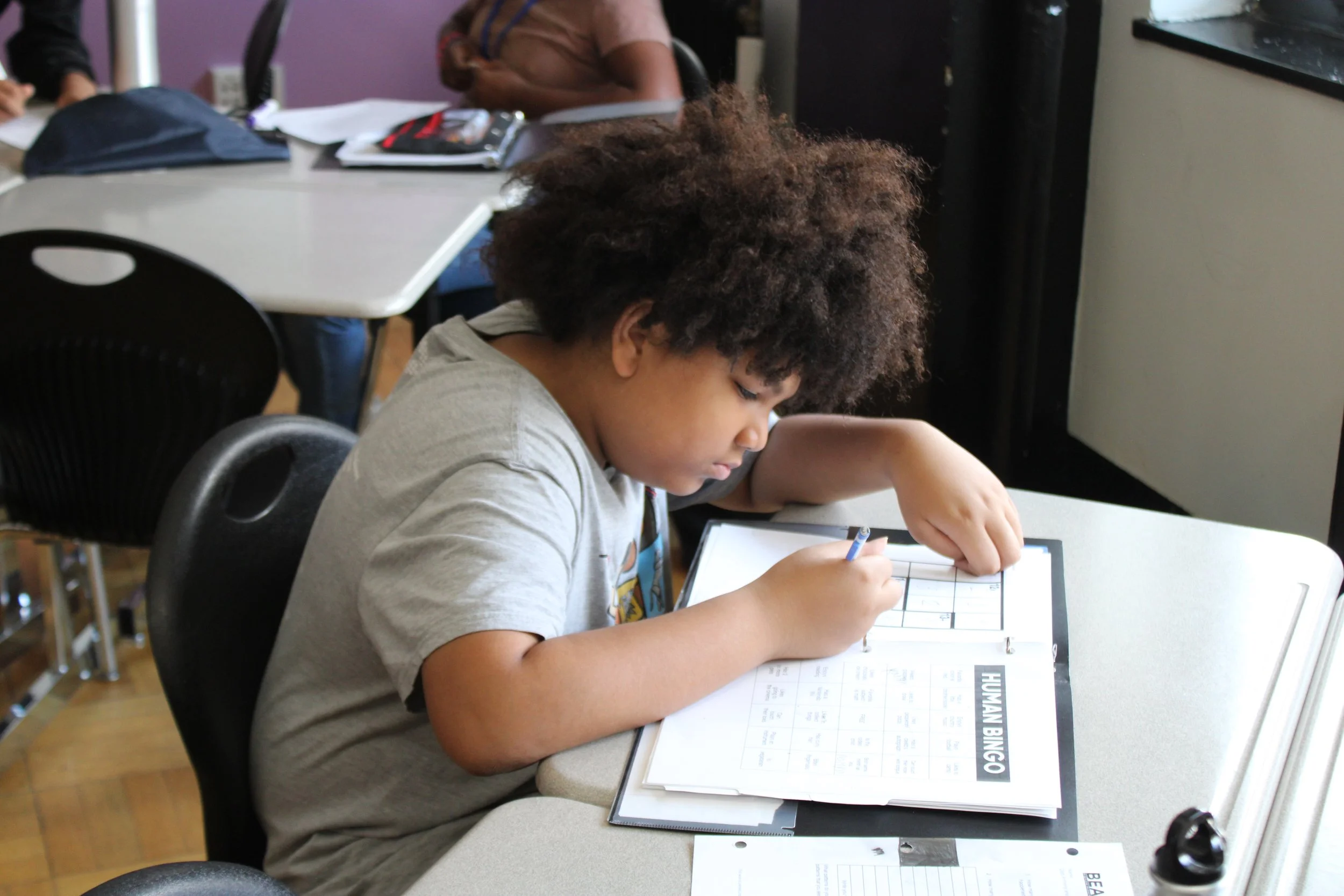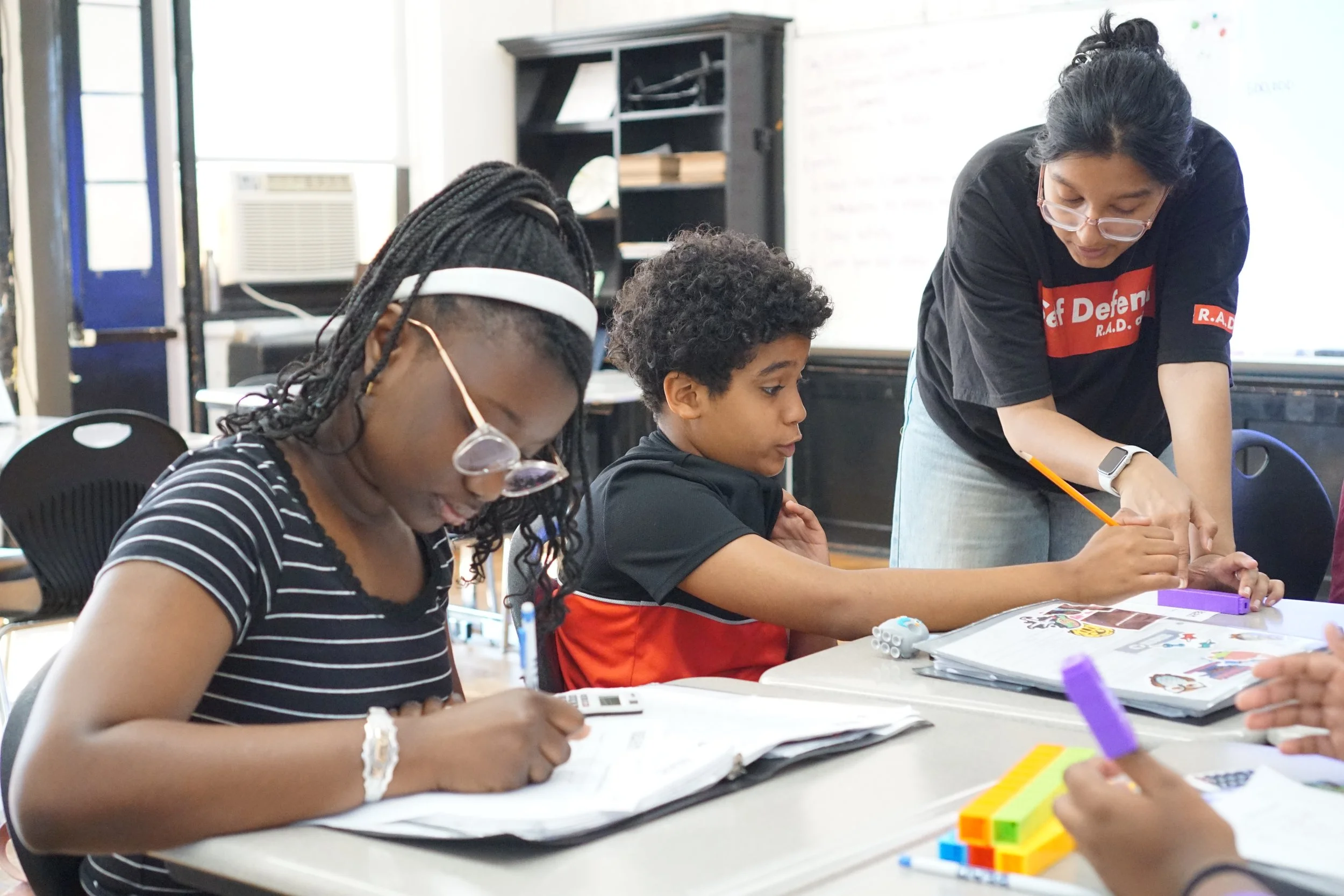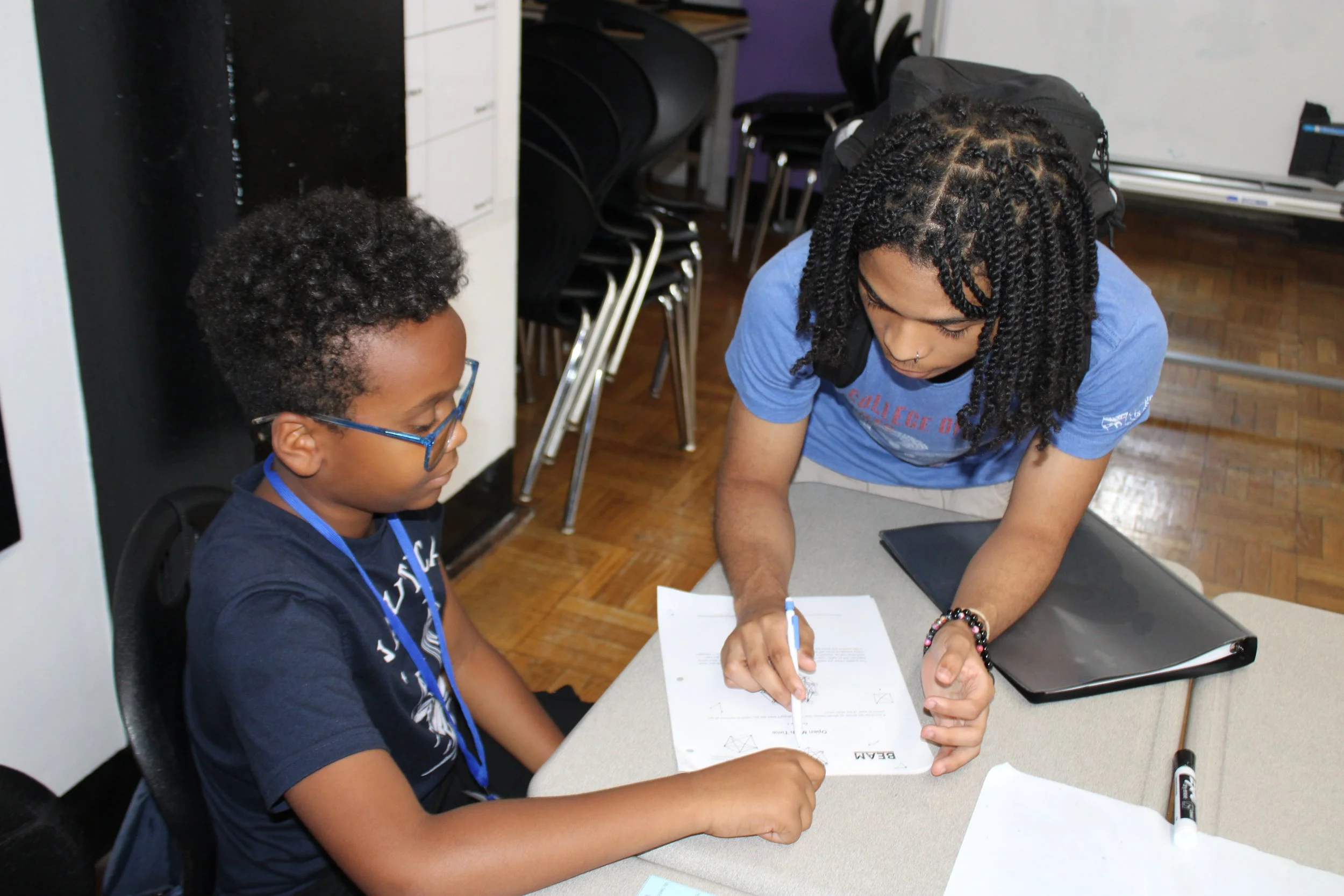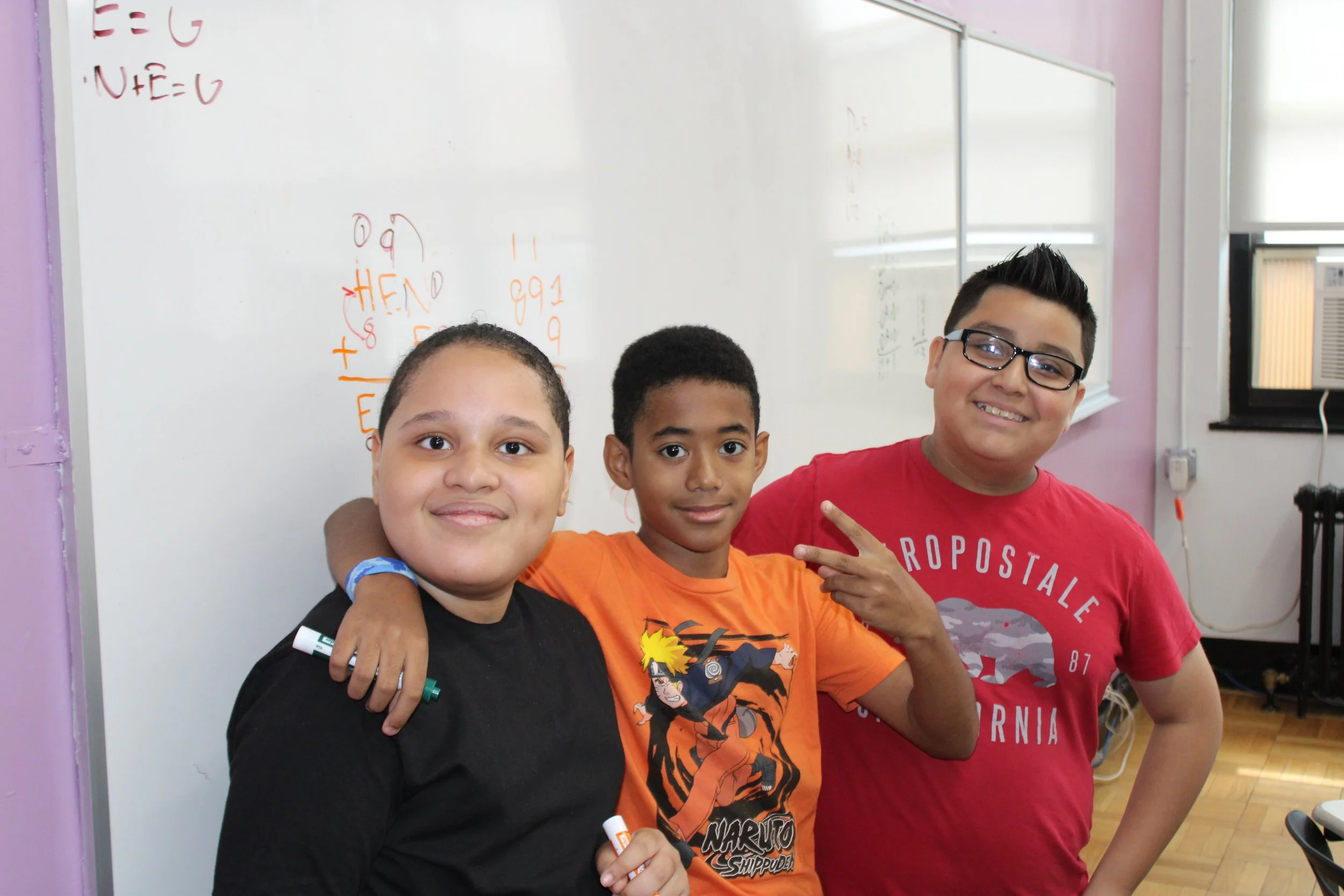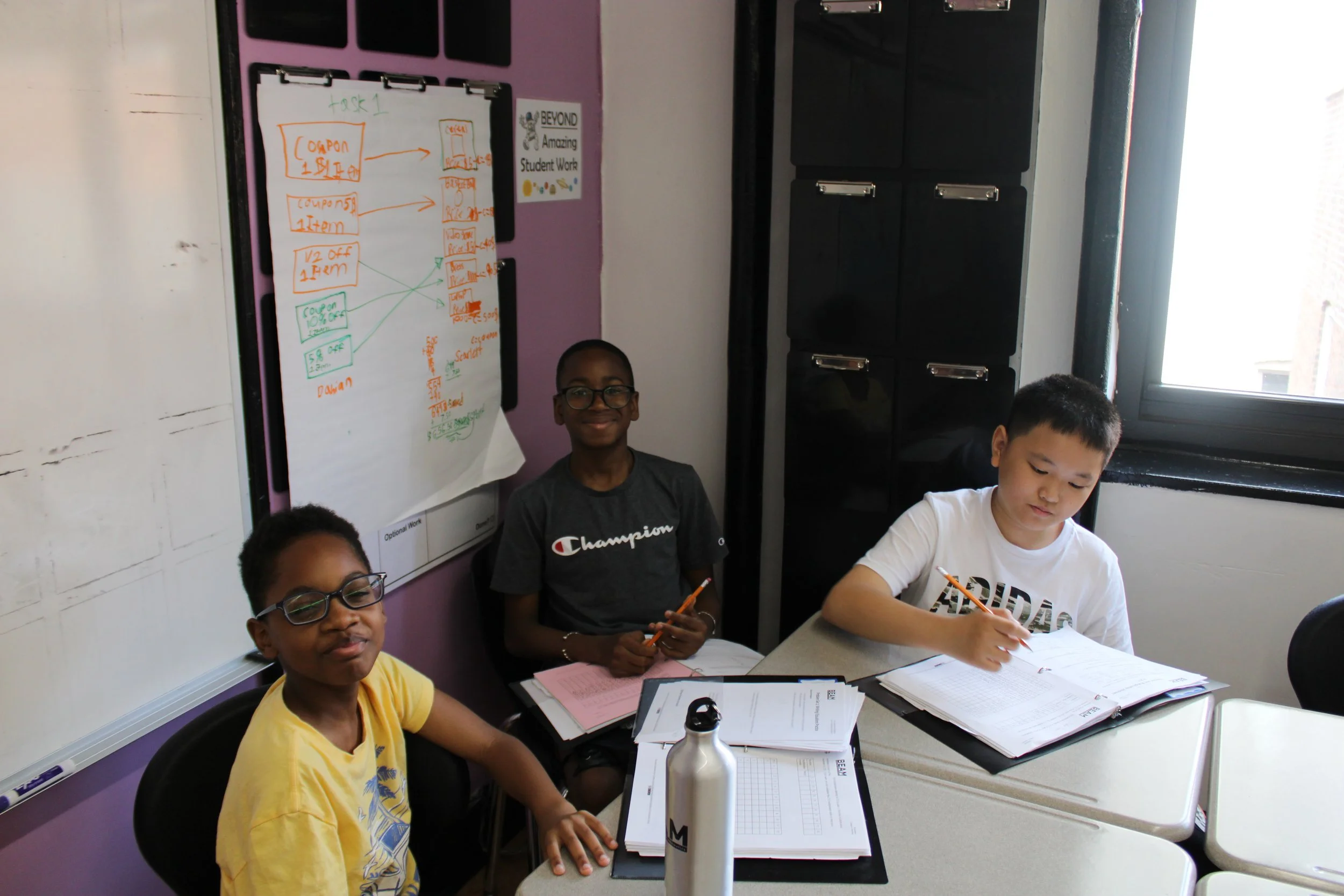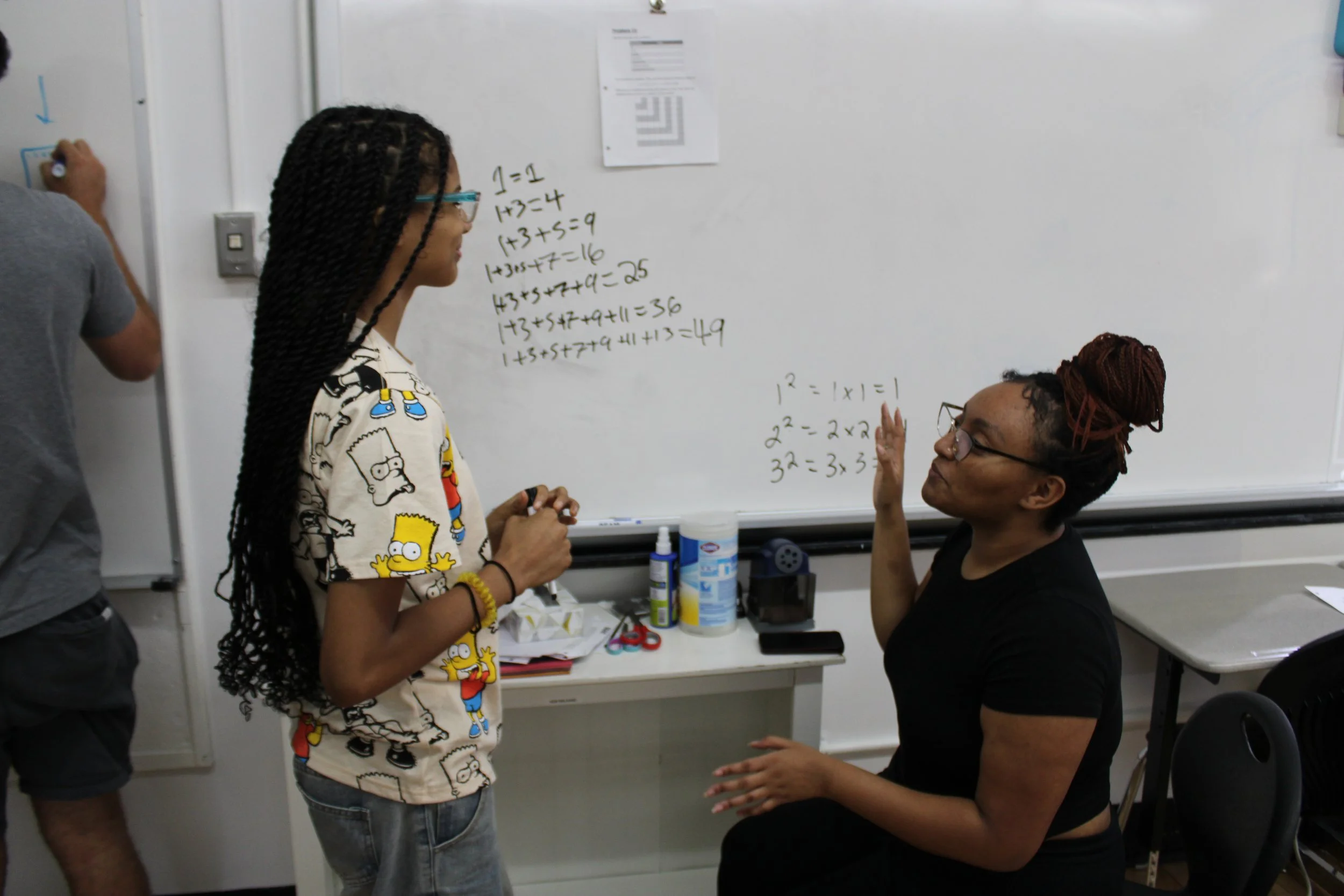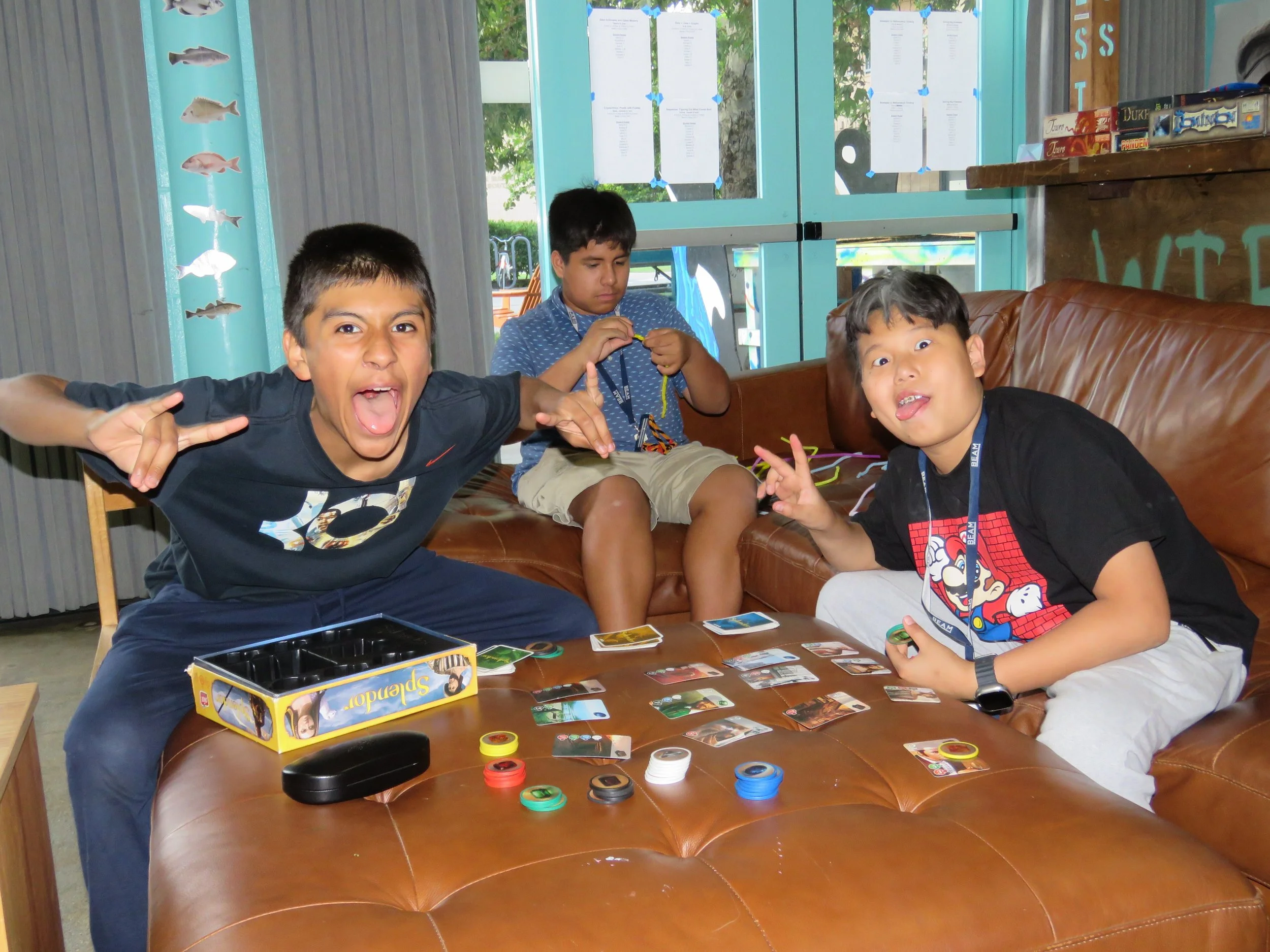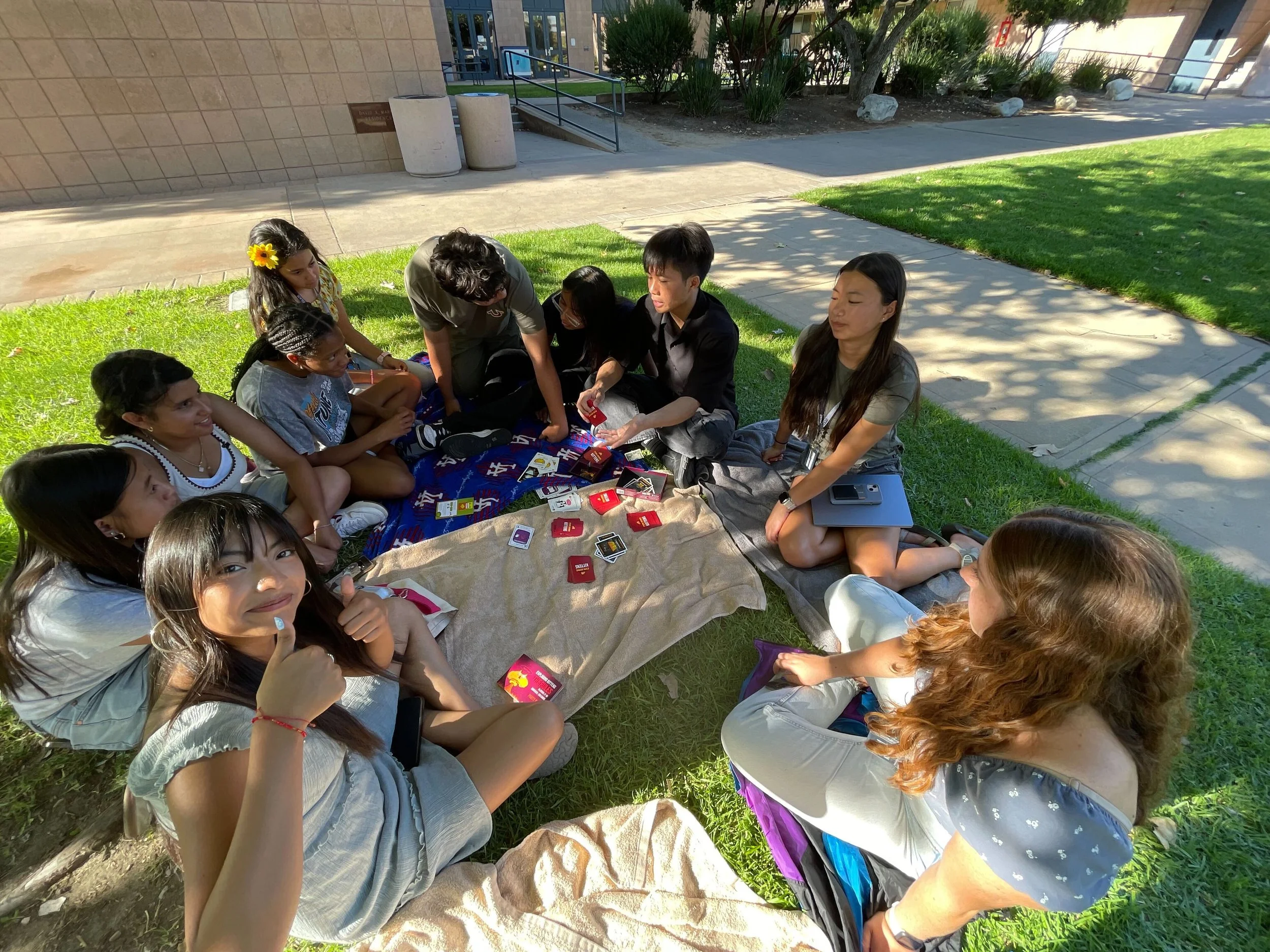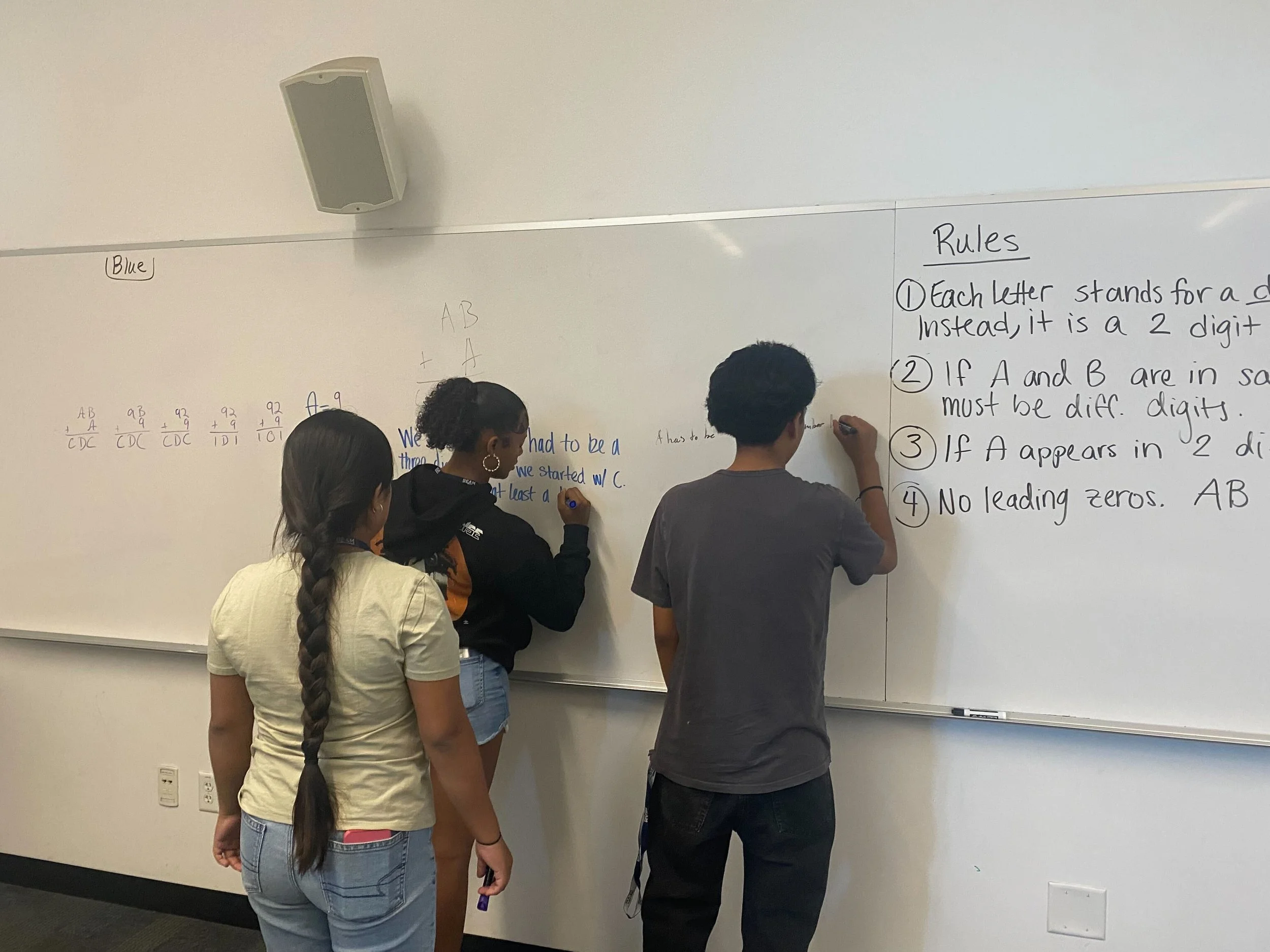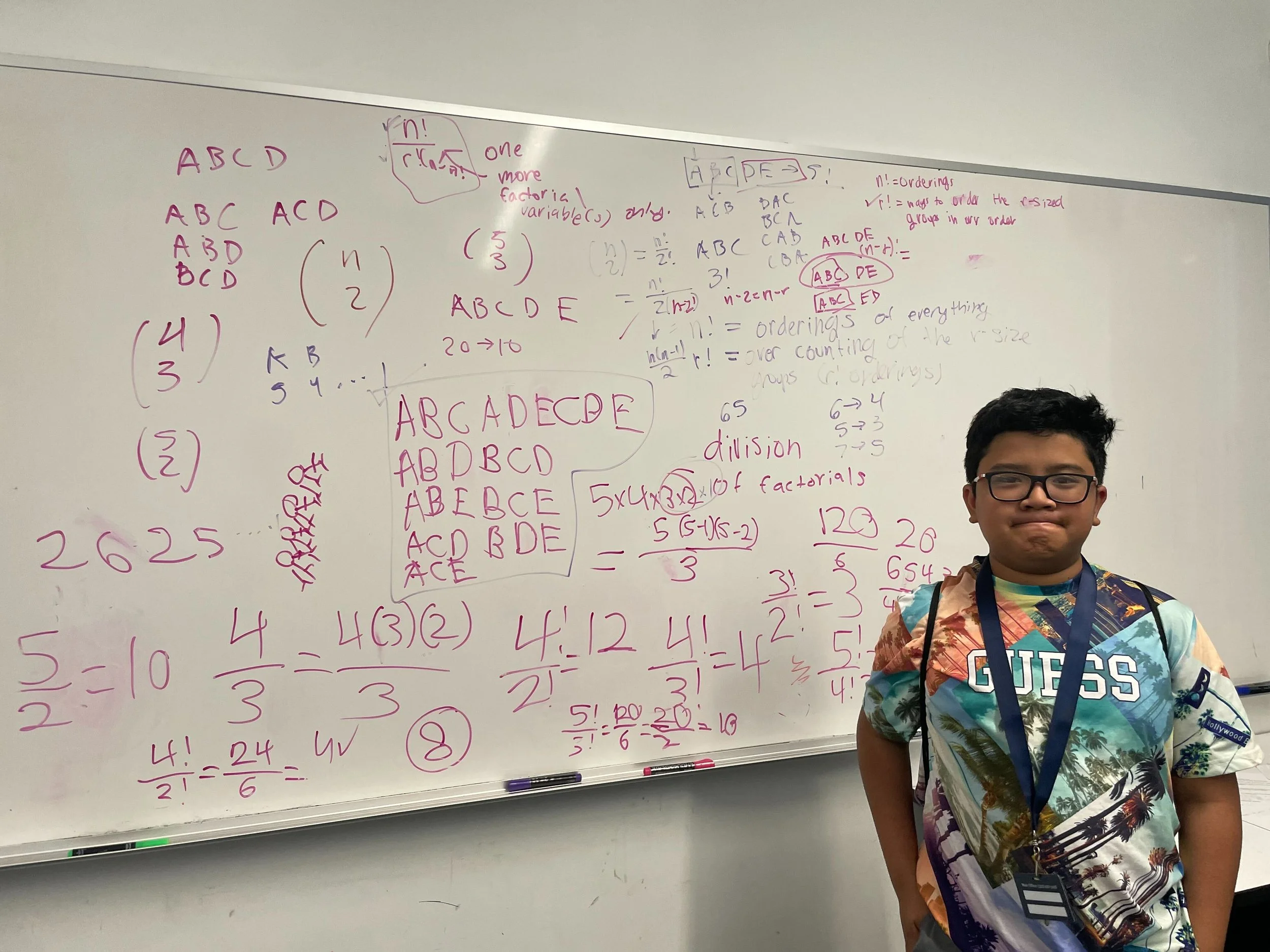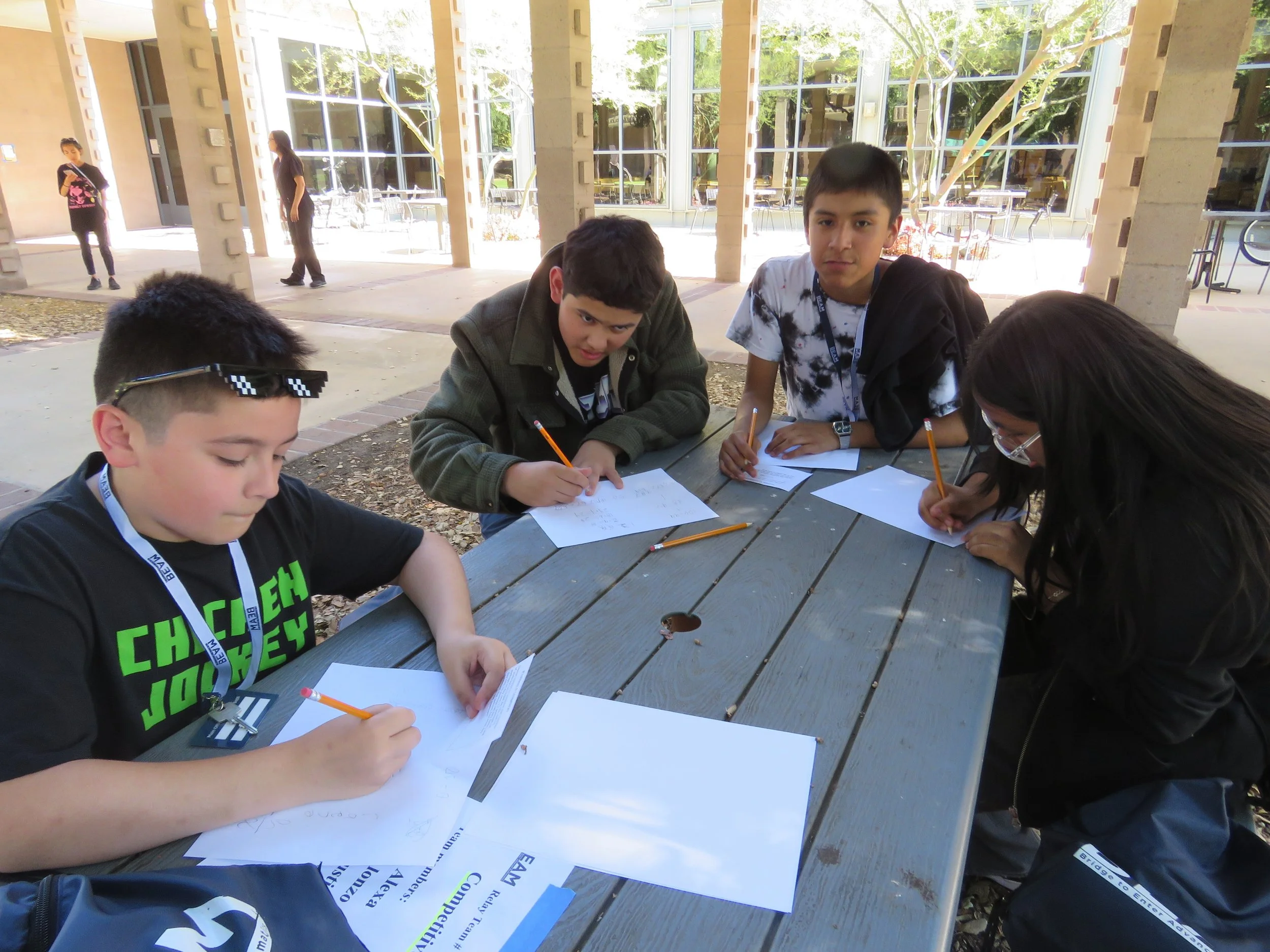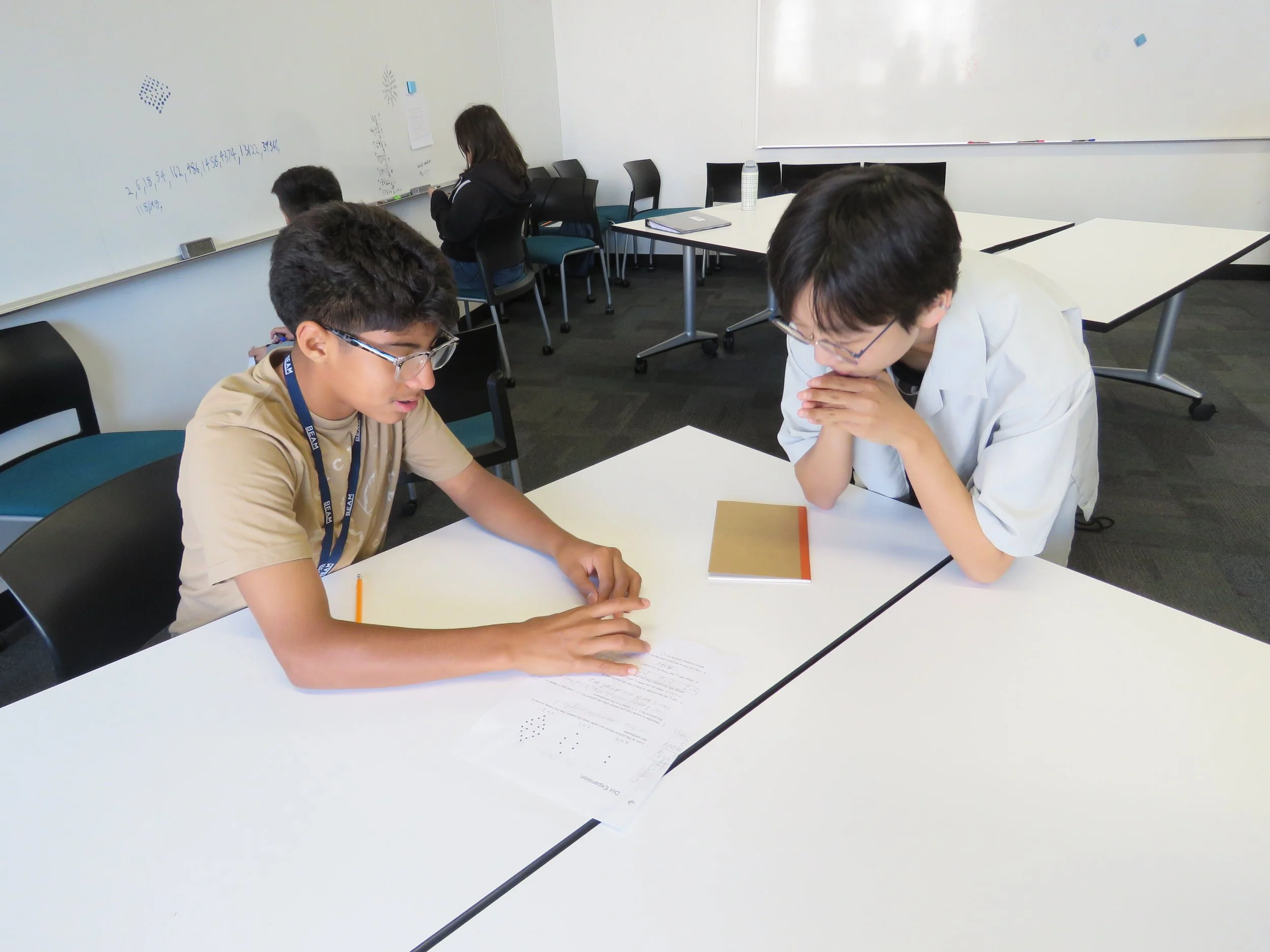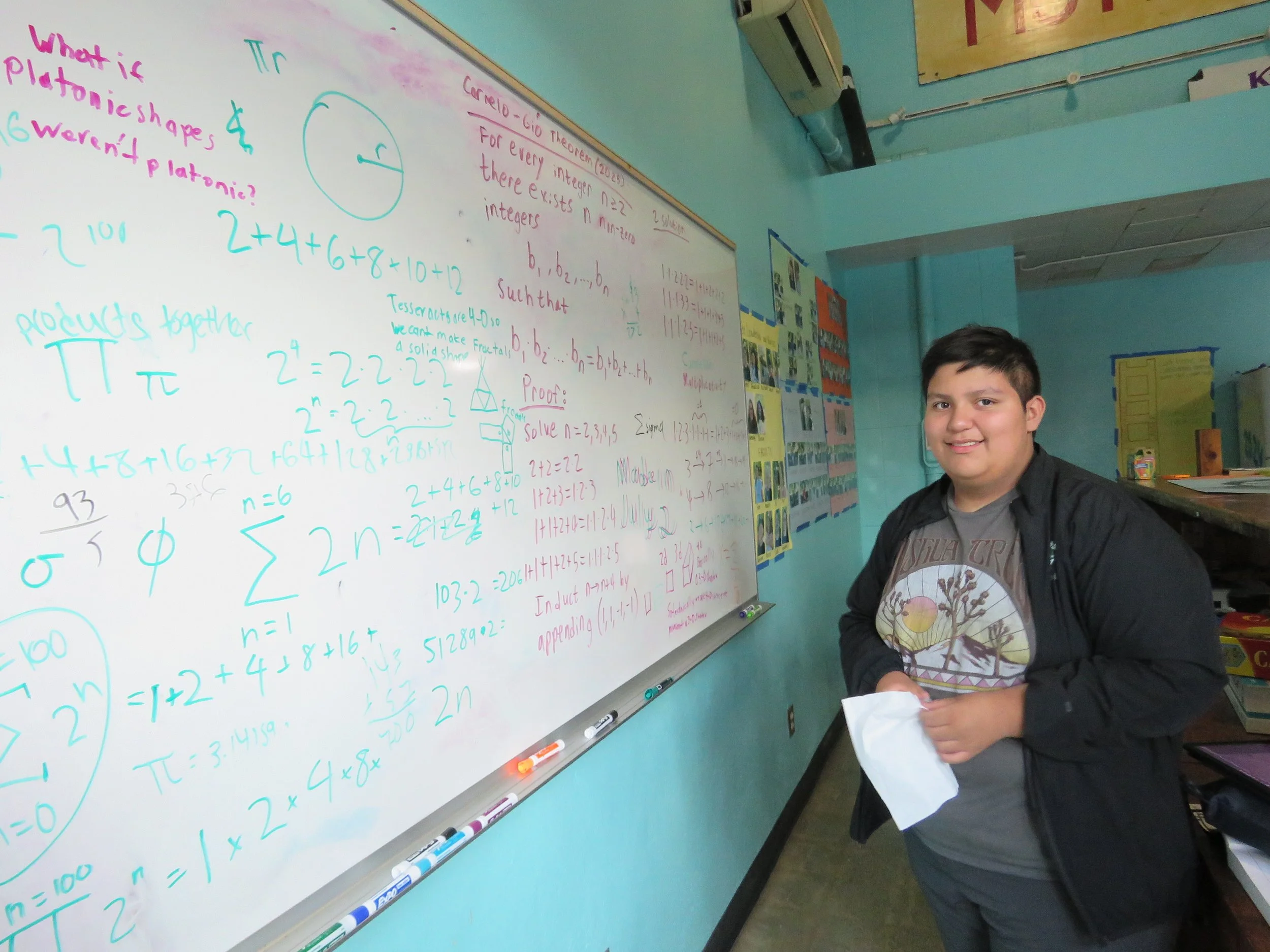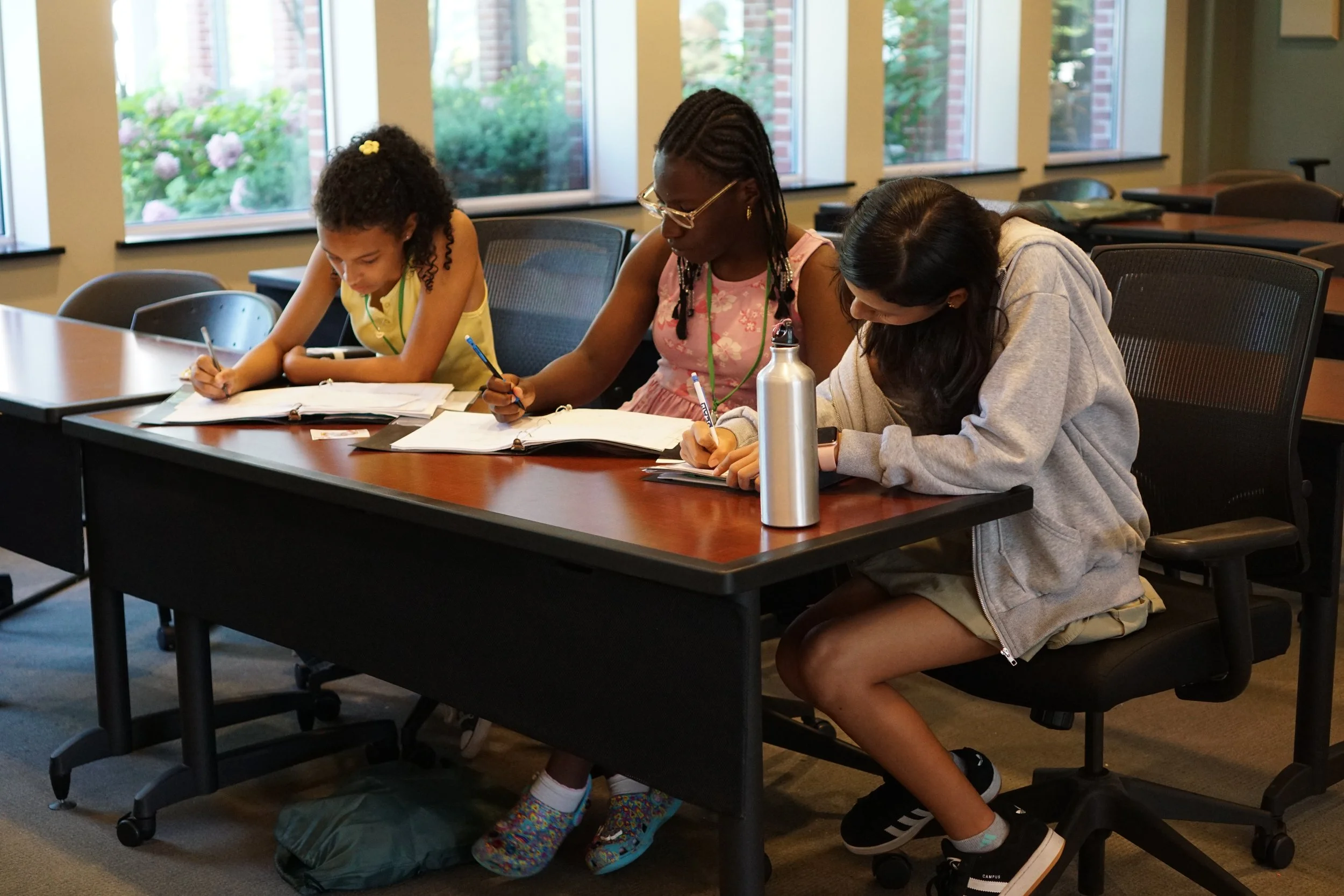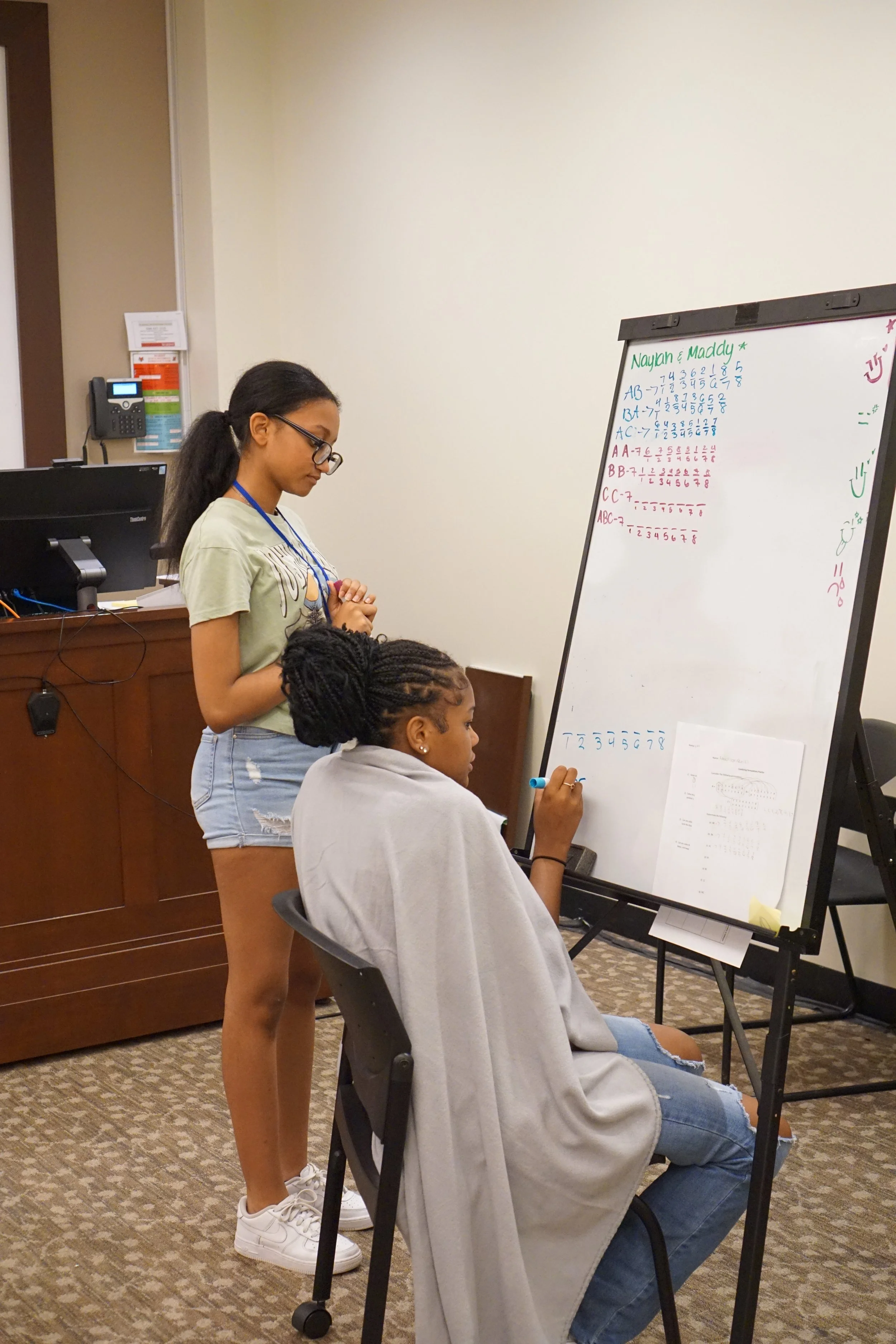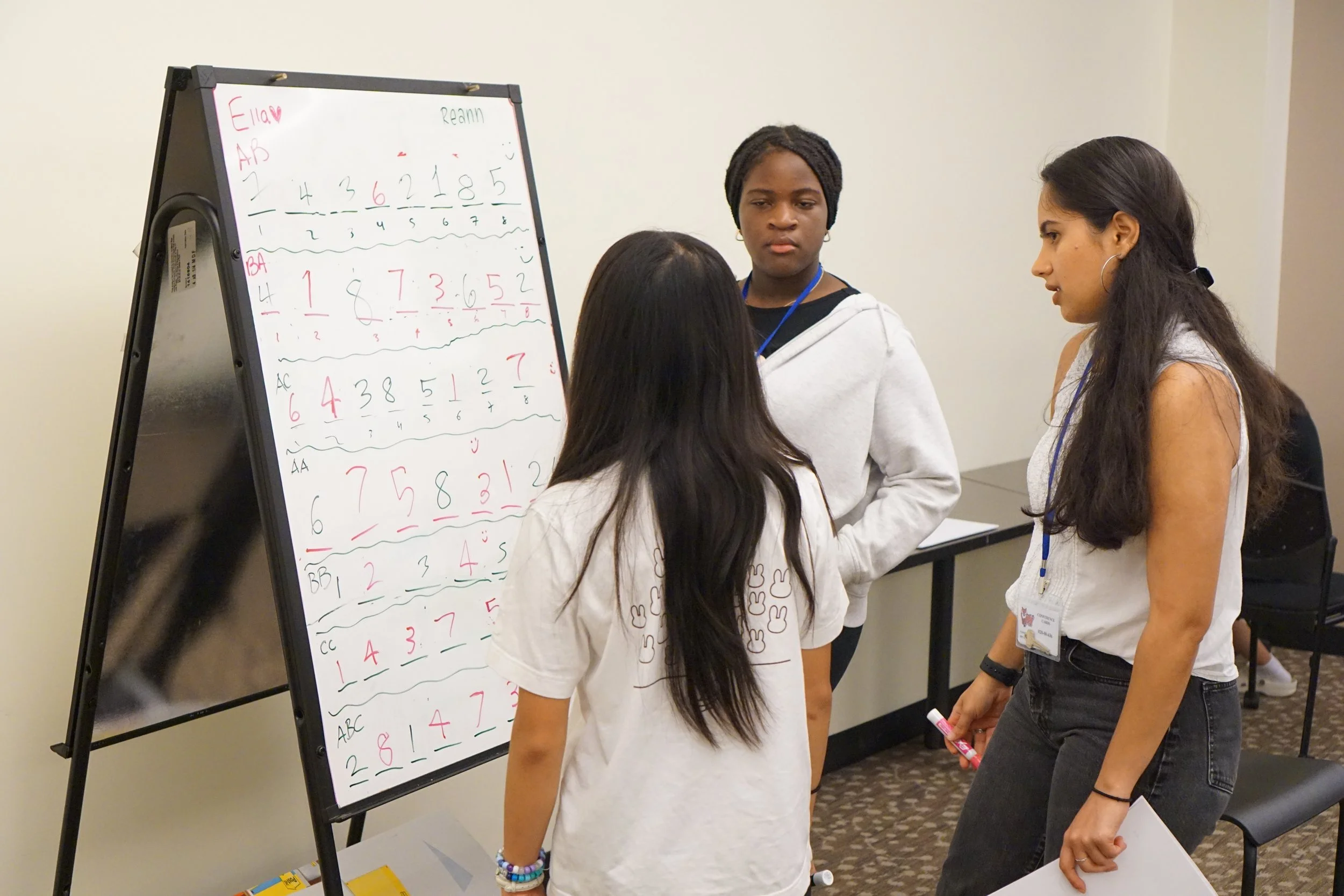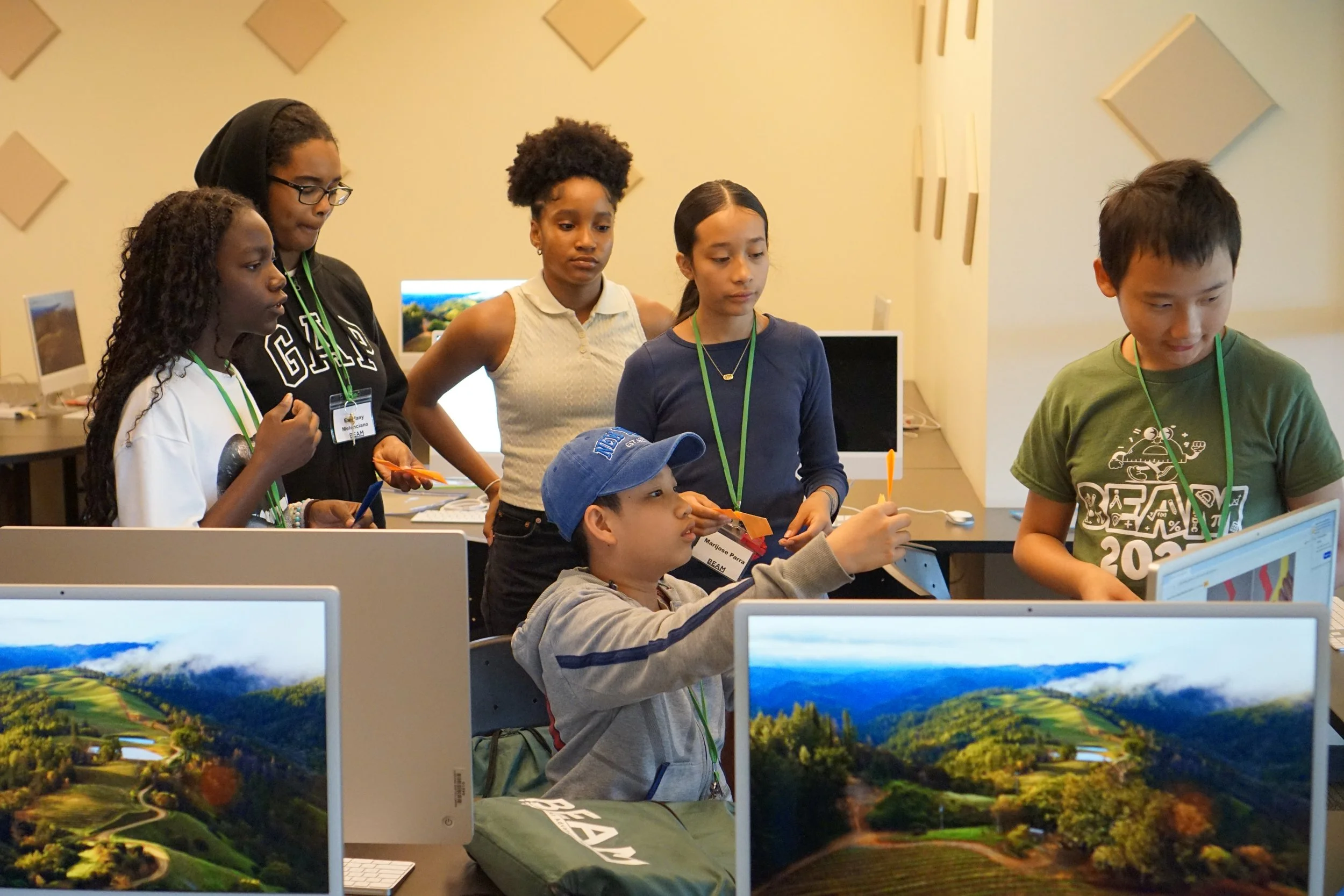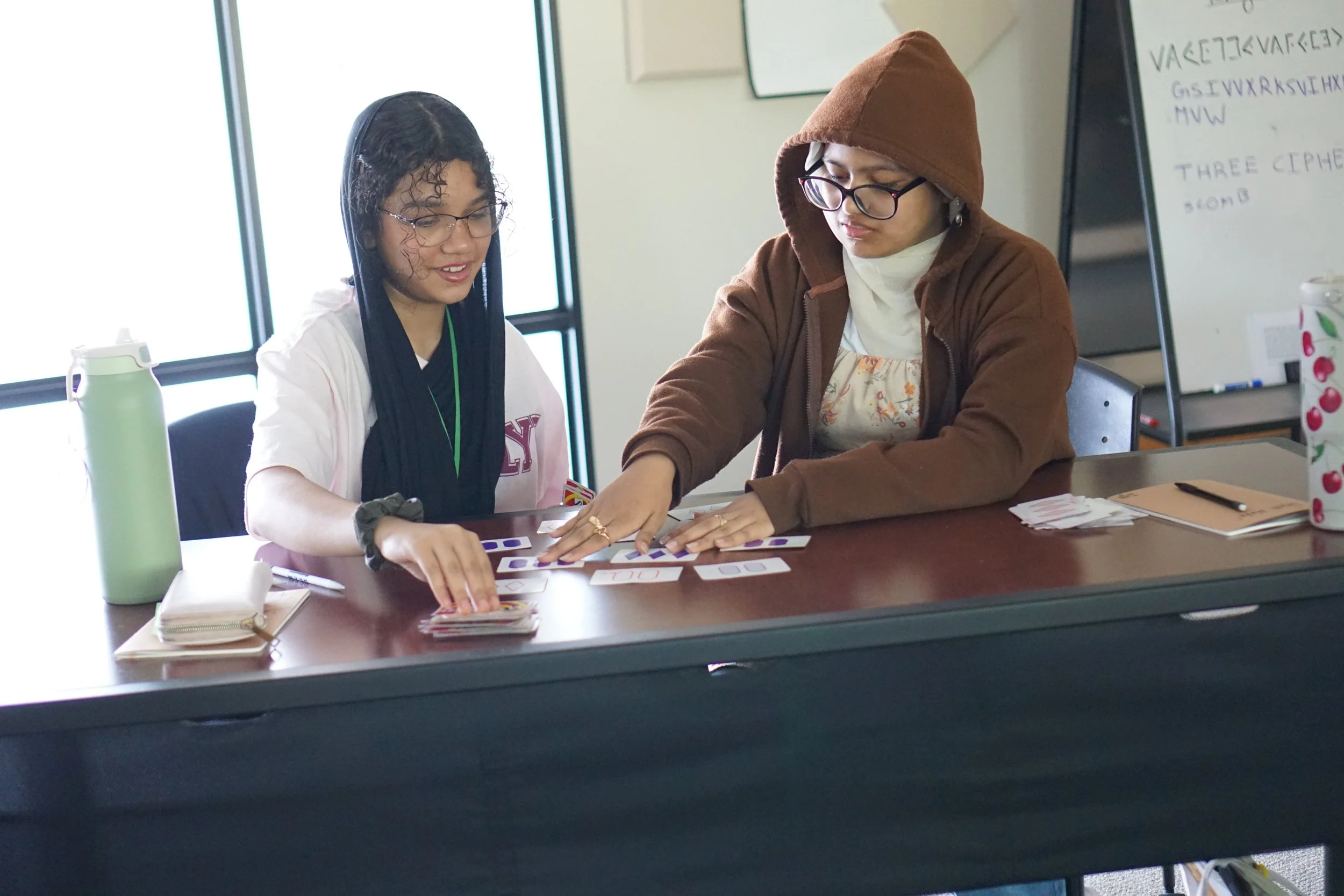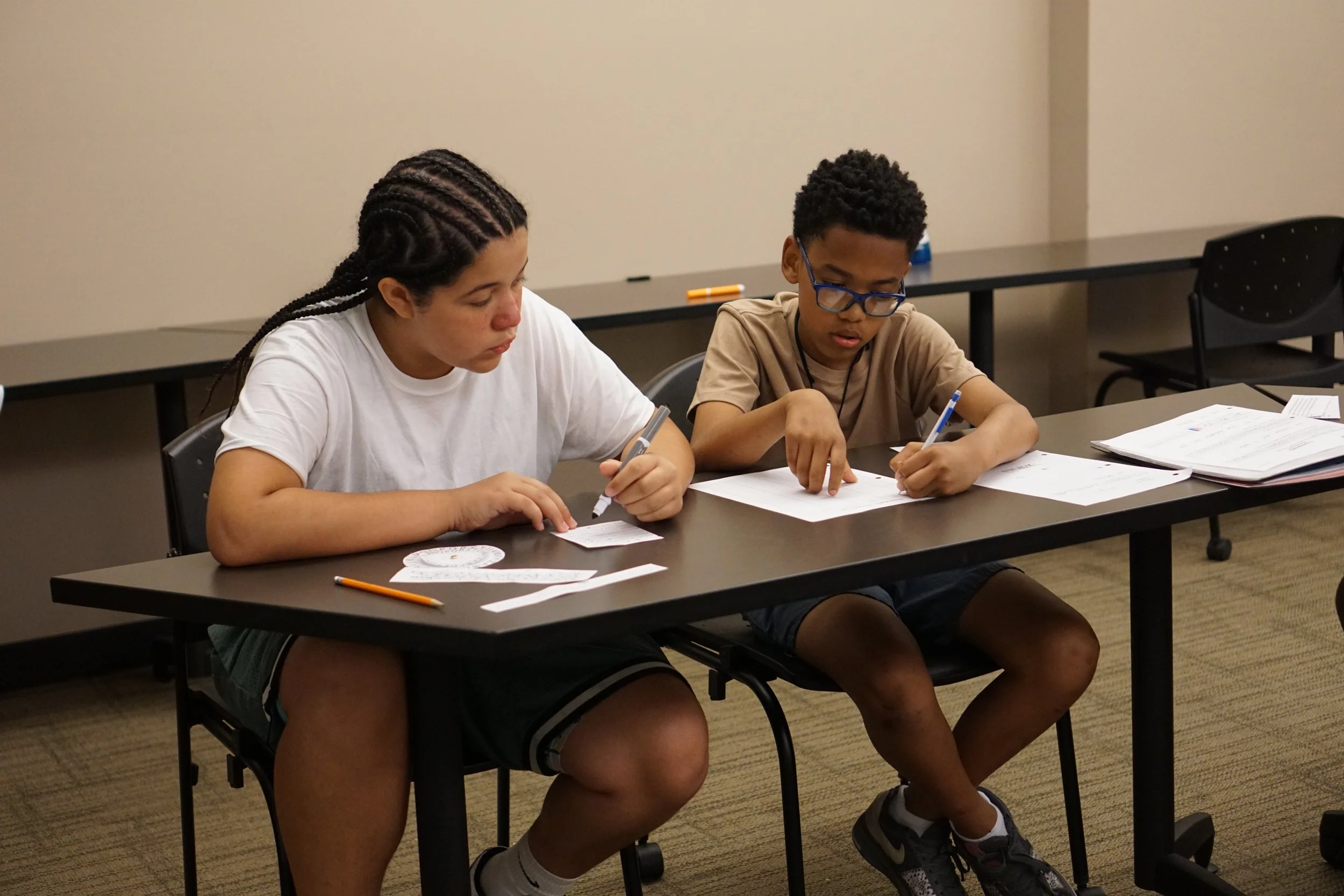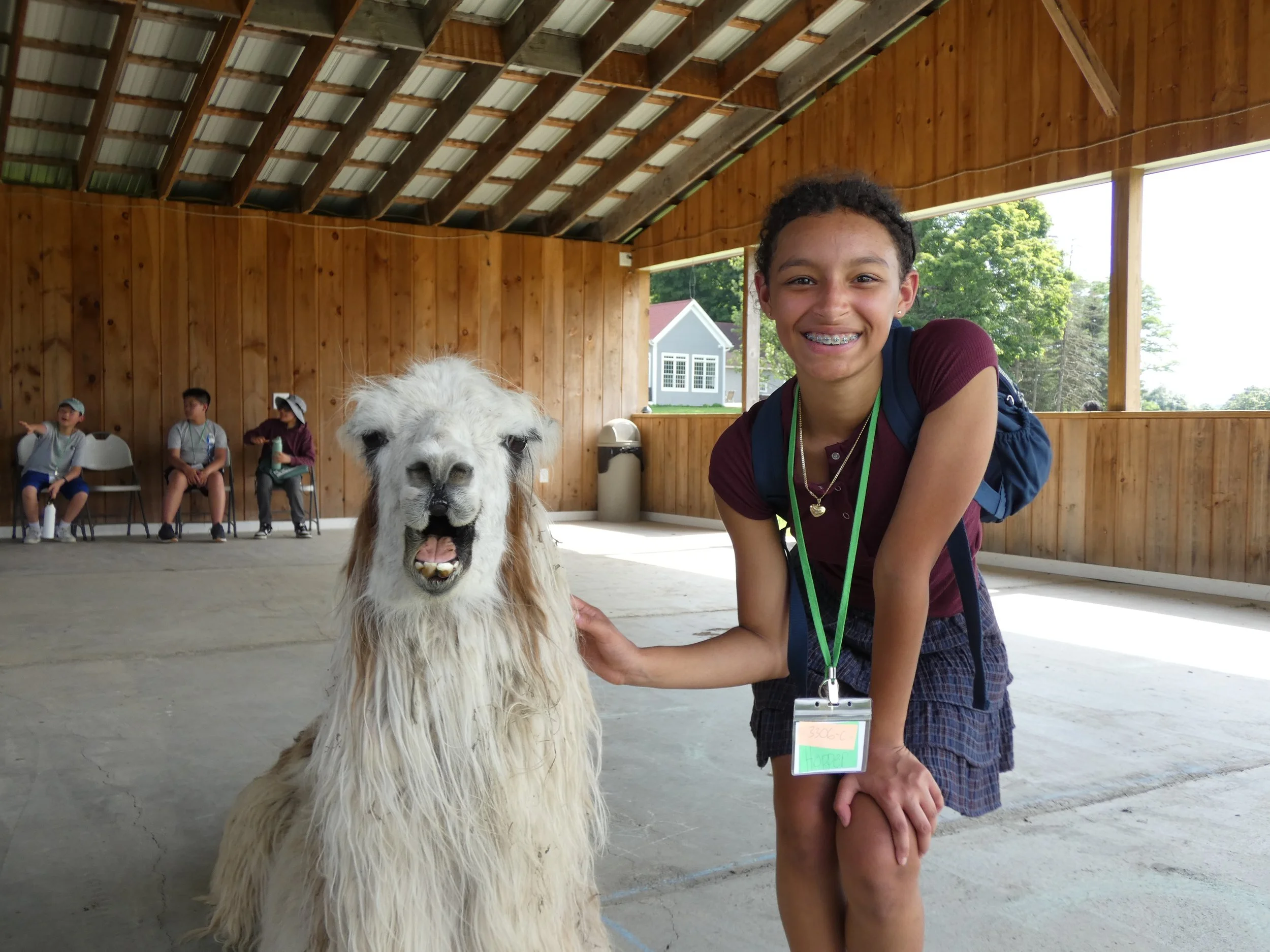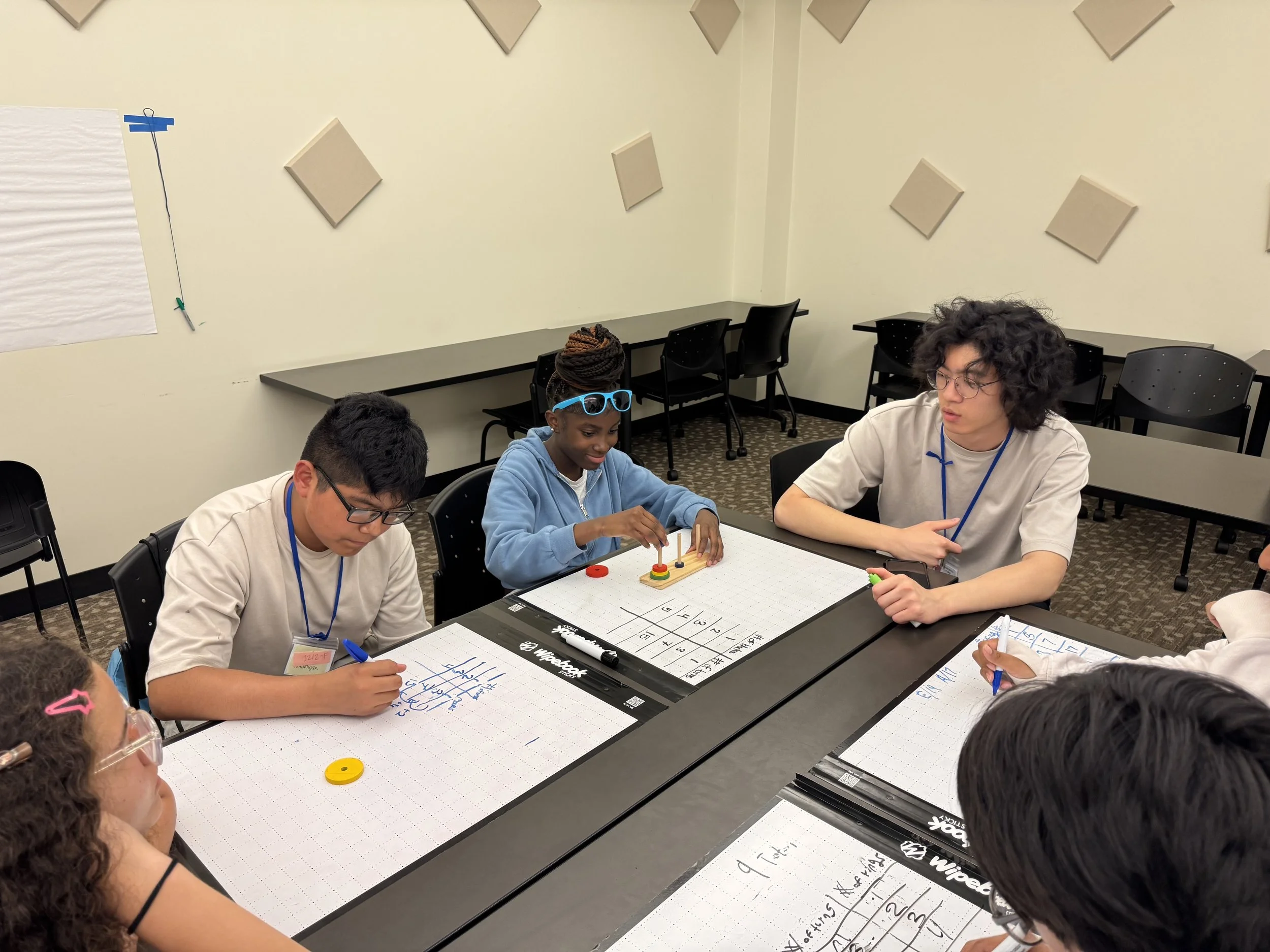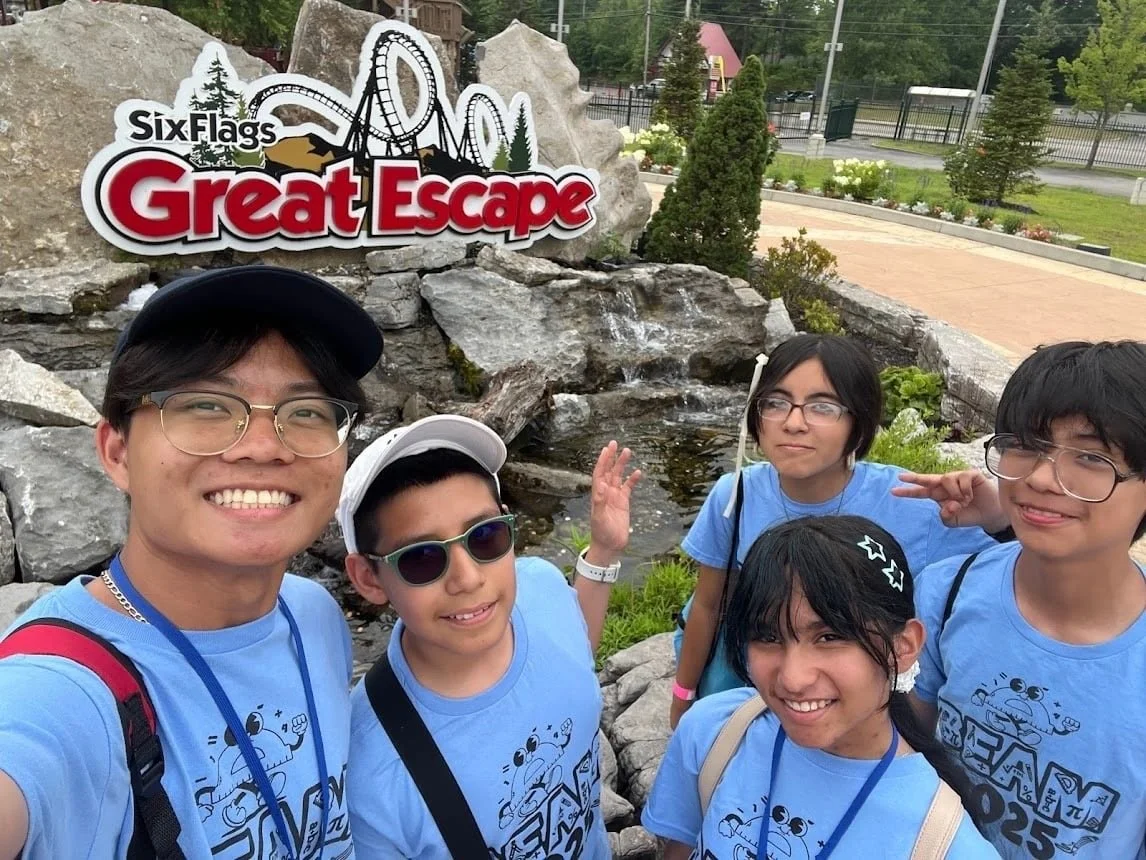Summer is a special time at BEAM, when hundreds of middle schoolers from New York City and Los Angeles attend BEAM camps to dive into advanced mathematics. This past summer, BEAM campers built strong, lasting communities, grew their problem-solving skills, and deepened their love and appreciation for math.
“It was like a dream,” said Ruby, a student who attended BEAM Summer Away at Marist University. “All the activities BEAM offers are so, so great. And the math is like the strong knot that brought the students and staff here together.”
Finding Joy in Math at BEAM Discovery
In July, BEAM welcomed nearly 300 rising 7th graders to Discovery, a 5-week day camp held at two sites in New York City and one site in Los Angeles.
At Discovery, students had the opportunity to choose from a wide variety of classes, including Count Without Counting; Game Theory; and Truth, Lies, and Logic. During Open Math Time, they worked collaboratively on math of their choosing. Especially popular was the 100 Problem Challenge, 100 fun, puzzly math problems students worked collaboratively or independently to solve. Some students spent upwards of 20 hours solving a single problem: Jade, who spent over a day solving Problem #13, wrote: “It was really difficult, but it was a fun experience and I learned that not all math problems have to be done in one day.” By the end of camp, Discovery students across all sites demonstrated statistically significant growth in key attitudes related to math, including love of math, sense of community, and math-specific perseverance and self-efficacy.
While students spend a lot of time at Discovery doing math (more than 90 hours!), they also get to let loose and make friends through social activities such as group meal time, sports, and field trips. In fact, 85% of Discovery students said they had fun this summer. Here’s what Caleb said when we asked if he’d recommend BEAM to a friend: “I would tell [my friends] that their math skills will grow and they will know higher grade math. I would tell them that it is truly fun and amazing and something I will never forget.”
Many of our Discovery students said they’d recommend BEAM to their friends. Josselyn said: “I would tell my friends that if you think the math is easy at your school and want to challenge yourself you should apply at BEAM. This program is everything: it's fun [and] challenging. This felt like a second home.”
friendships and formulas at beam summer away
This summer, over 100 rising 8th graders attended BEAM Summer Away at Marist University in New York and Harvey Mudd College in Southern California.
Over the course of the 3-week residential camp, Summer Away students got a taste of life on a college campus while studying advanced mathematical topics through courses like Tessellations, Logic Games, and Ethomathematics. Outside of class, students competed in math relays and collaborated to complete special “Challenge Problems,” proof-based problems that groups solve to earn prizes. Students didn’t shy away from harder math: at the conclusion of the program, 95% of students across sites reported that their math skills grew, and 84% agreed with the statement “I like to solve complex problems.” At Summer Away, the median student grew nearly 20% in national ranking on a national math contest, the AMC 8, which we use to measure problem-solving growth. We see this as strong evidence that students were engaged in deep learning and grew significantly as mathematicians this summer!
Summer Away is a transformative experience for many students, and building a community of math-loving peers is central to that experience. When they weren’t in class, BEAM students played sports and board games, did arts and crafts, and went on field trips. Students formed close friendships living in residential halls and attending nightly hall meetings. BEAM’s welcoming and collaborative atmosphere led to amazing social outcomes: 94% of students reported feeling a sense of community at BEAM, and 96% of students said that they had fun in the program!
“BEAM Summer Away is a once-in-a-lifetime experience,” said Rowan about the SoCal program. “I feel like I learned more here in one of the week-long courses than I did in a whole semester at regular school. I learned a lot, made new friends, connected with staff members, found new hobbies, gained confidence, worked on myself as a person, and enjoyed the camp. My experience here at BEAM Summer Away was wonderful. I don’t think I’ll ever forget it.”
welcoming our academic directors
Every year, BEAM uses feedback from staff, faculty, and students to refine our programs and make each summer the best one yet.
Gabe, the Academic Director for one of the cohorts at Marist University, leading a fun activity
This summer, we introduced a new leadership role at each site: Academic Directors. Serving as a resource and support for the faculty at our camps, Academic Directors provided one-on-one coaching, observed classes, and created space for faculty collaboration. Sarah, the Academic Director at BEAM Discovery in Los Angeles, emphasized the importance of faculty collaboration at camp: “The faculty really enjoyed having time to debrief and discuss their classes, and it helped them build relationships and learn to lean on each other.” She often guided conversations with prompts like “How do you work with your Teaching Assistants?” or “What’s more important, that a student completes a problem or comprehends it?” to inspire thoughtful discussions around pedagogy and classroom management.
Beyond faculty support, Academic Directors also ran math-focused activities beyond the classroom, including math relays, a “problem of the week,” and the 100 Problem Challenge. “The faculty really appreciated having a thought partner,” reflected Sarah, ”someone who could help them think critically about their classes and their teaching.”
spotlight on beam alumni
We’re honored when BEAM alumni choose to give back to the program by joining our summer staff; this summer alone, over 35 counselors and junior counselors at BD and BSA were former BEAM students!
SJ helping a student with a computer science project during her beginner-friendly class “Code Logic”
Two program graduates from BSA 2015, Crystal and SJ, returned to BEAM as junior faculty this summer. After sitting in on their classes, BEAM’s founder Dan Zaharopol wrote:
“Crystal knew exactly what it means to develop students' problem solving skills in a deep way, and she had a bond with the students that was extraordinary to see. My heart was really full sitting in on her class and seeing what a great teacher she is. Equally special to me was seeing SJ, who is now a computer science teacher. I found out that she'd reached out to her former BEAM teacher to get his notes so that she could teach a version of it to her students. It's an incredible, full-circle story: a class had a really big impact on SJ, and then she used the same materials to inspire the students coming up next. Both Crystal and SJ really brought the spirit of our program in their bones, a deep knowledge of what BEAM can do, and they carried it forward.”
REFLECTING ON an impactful summer
We had an incredible summer with our students. For many, it was a transformative experience where they got to engage with a whole new kind of math and found a life-long community of mathy peers. In the words of BEAM Summer Away student Mariana, “BEAM is the most cheerful, fun, and interesting place to be. It was the best time of my life.”

